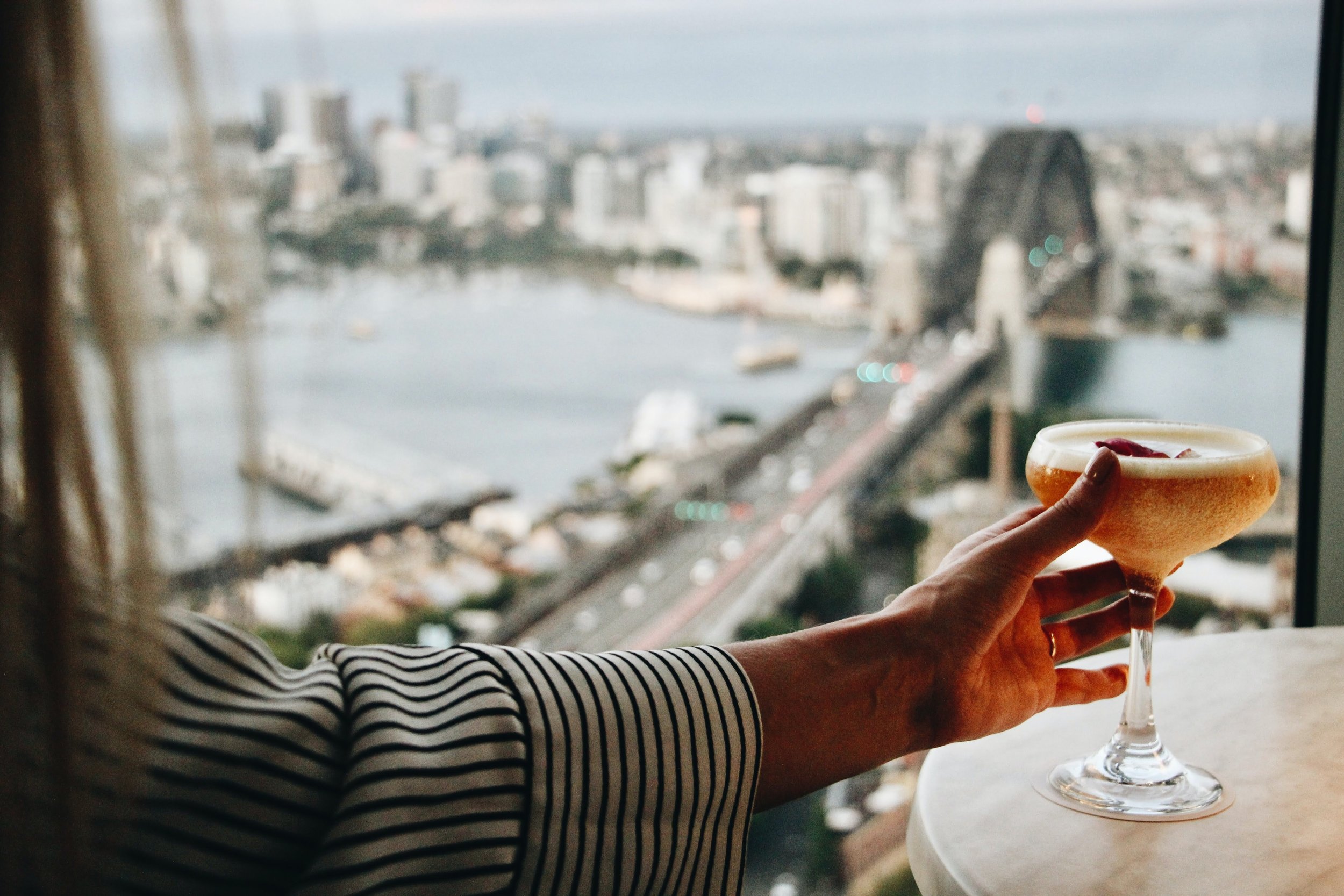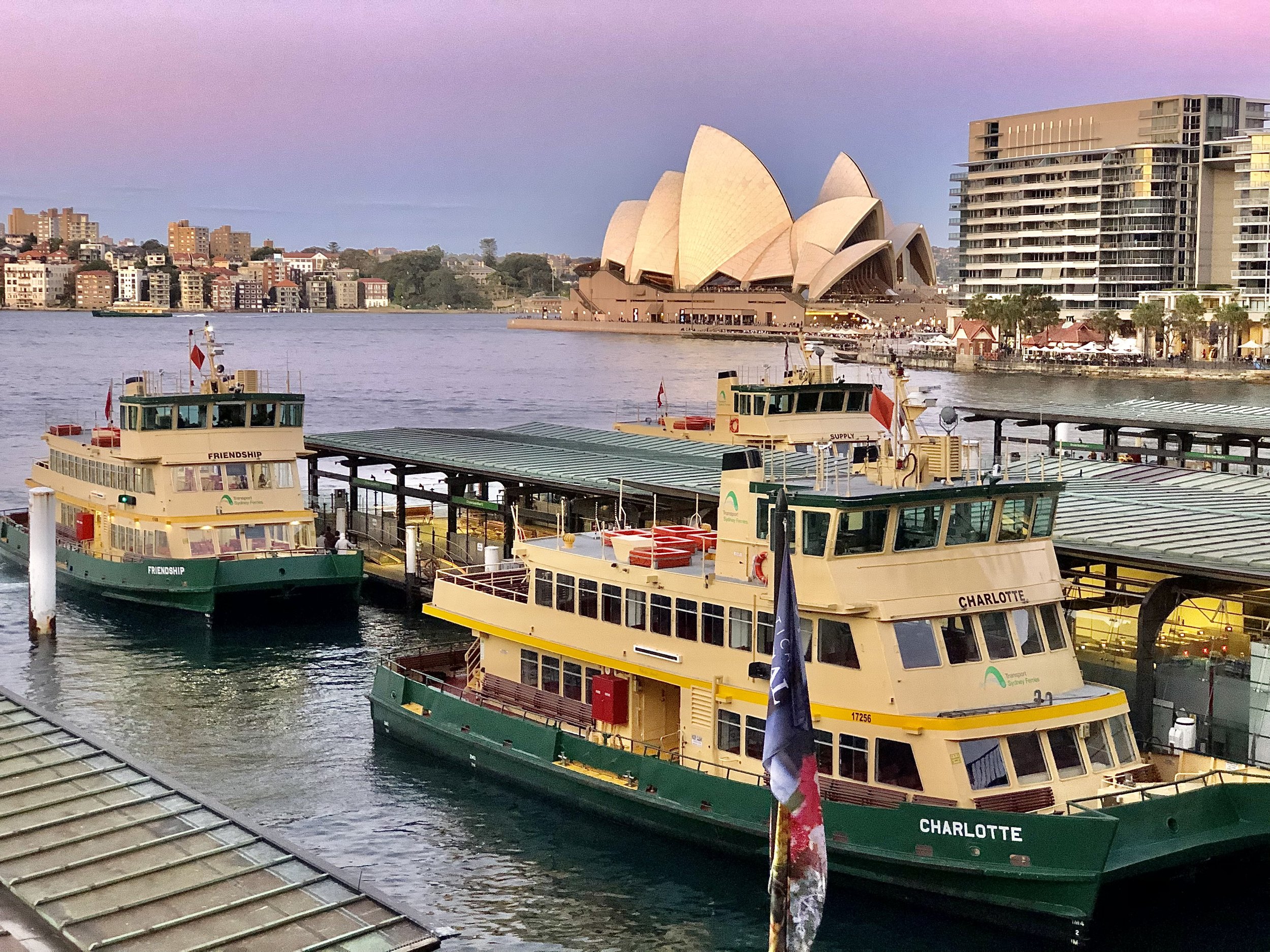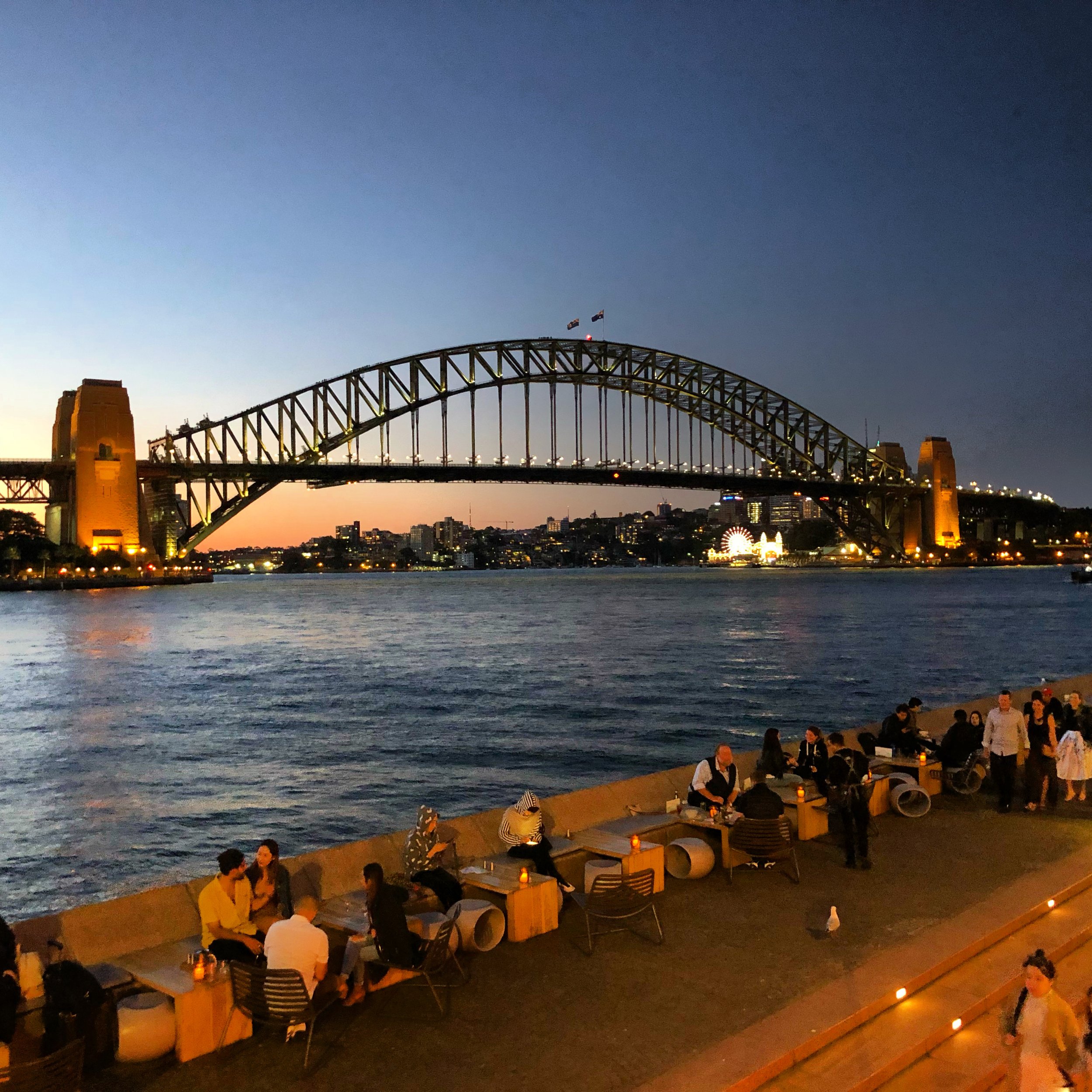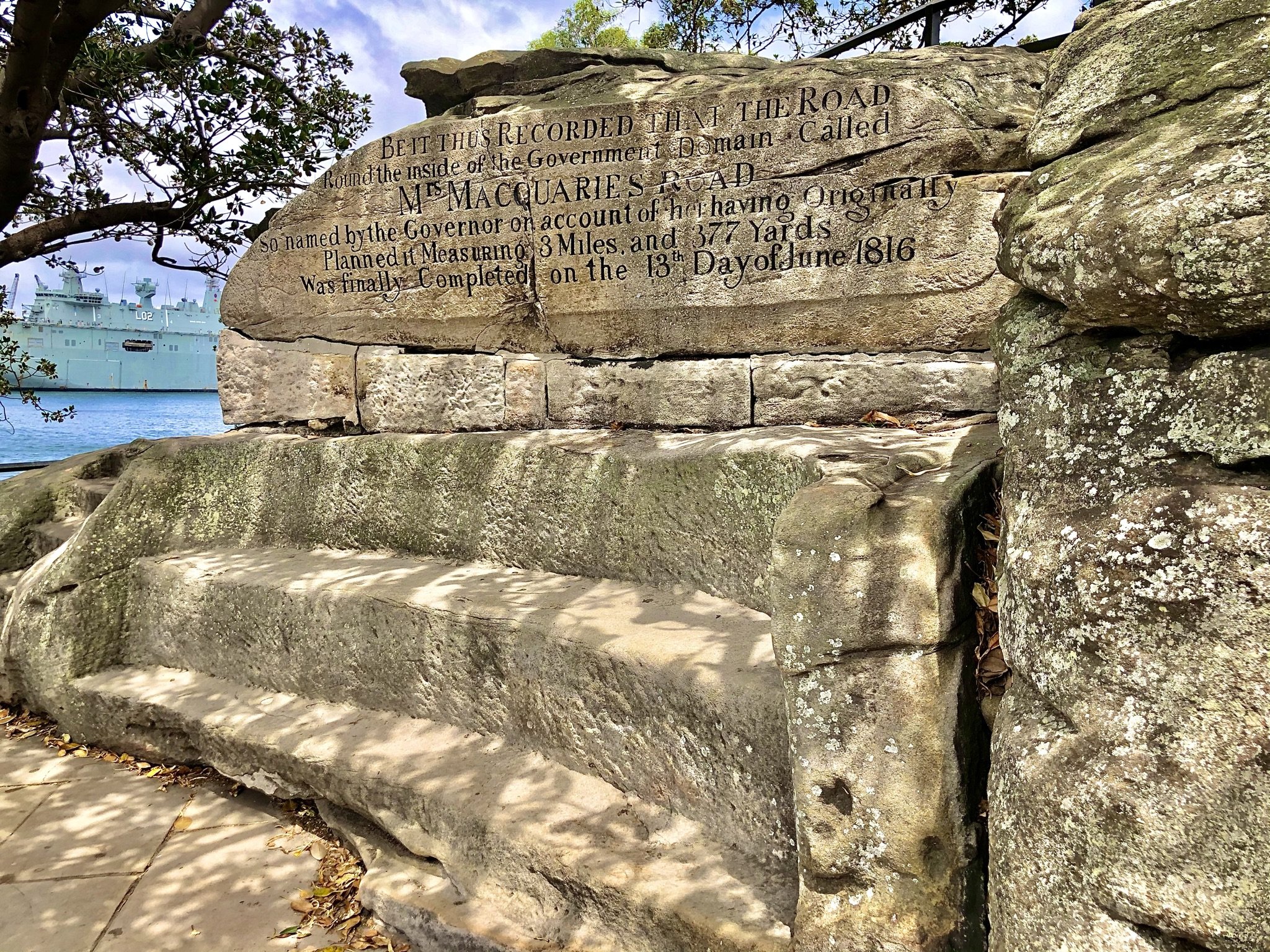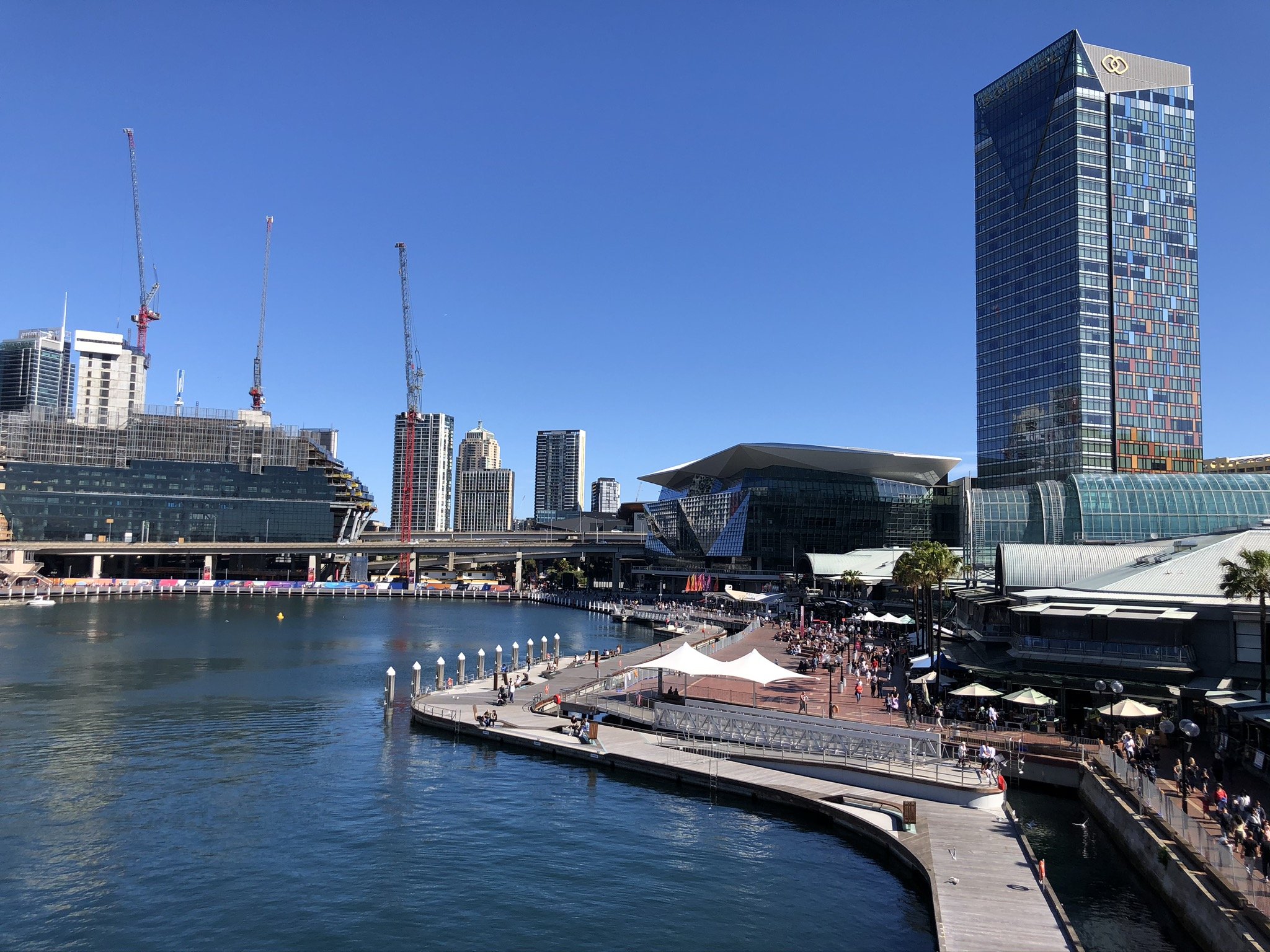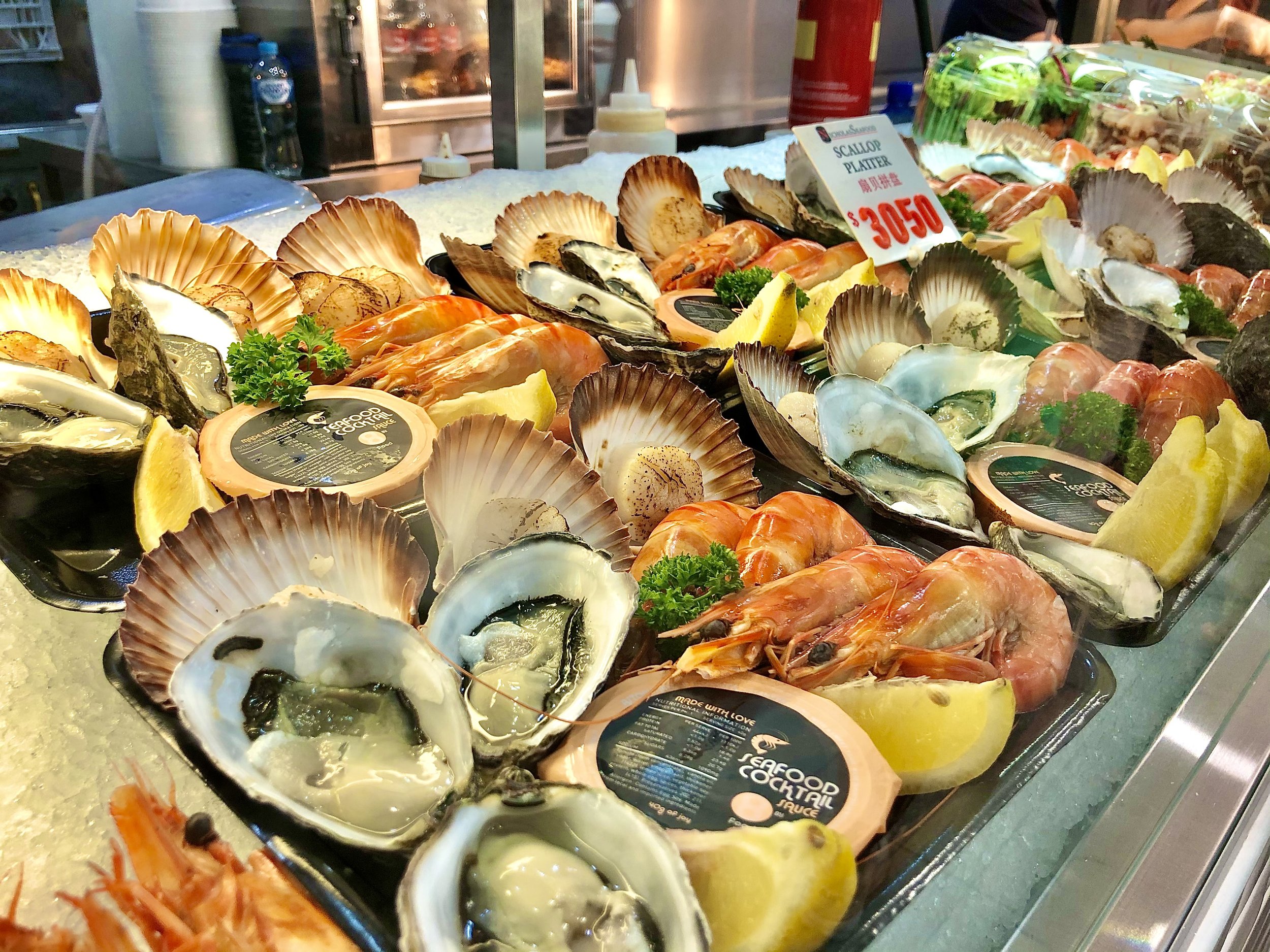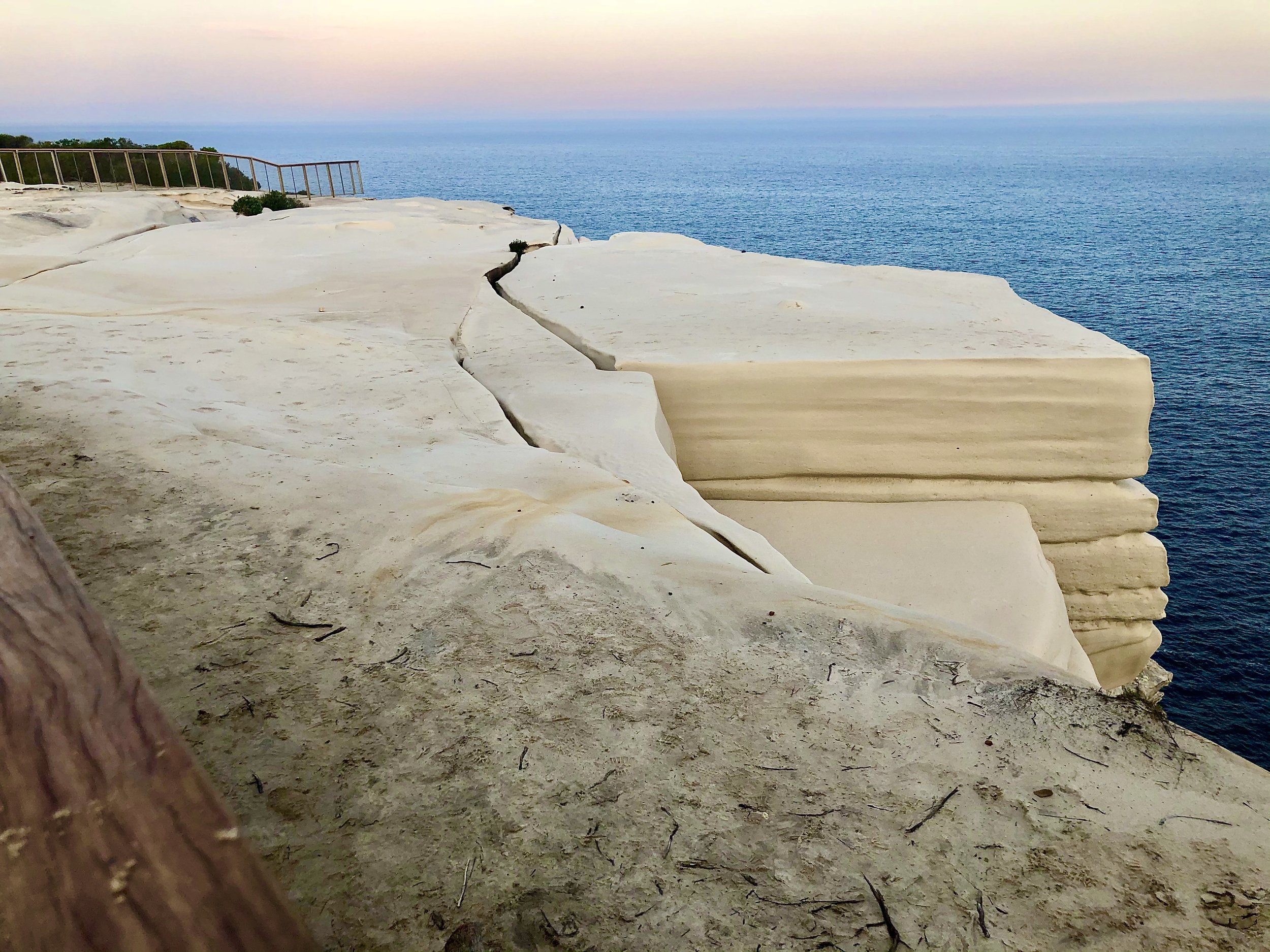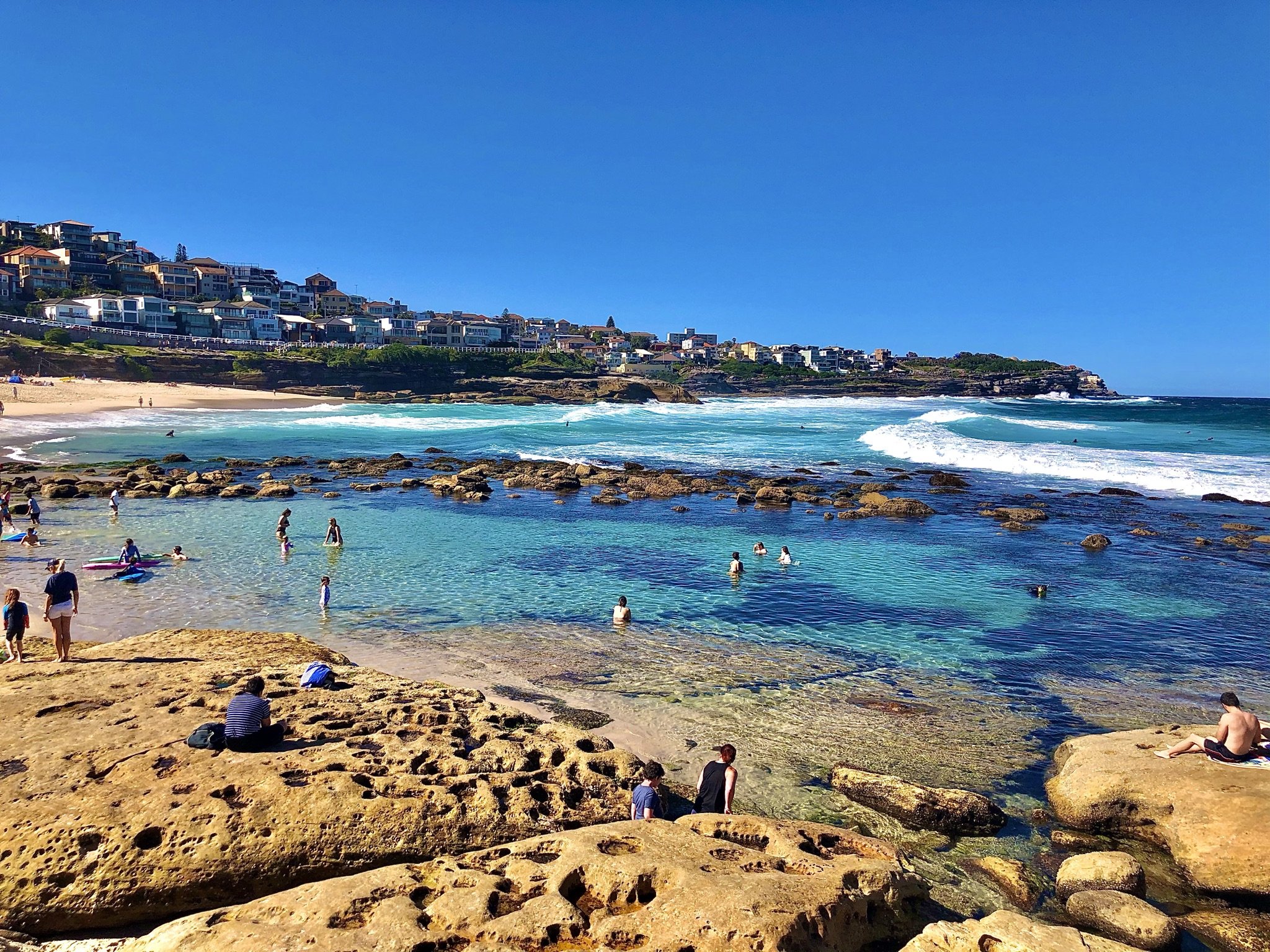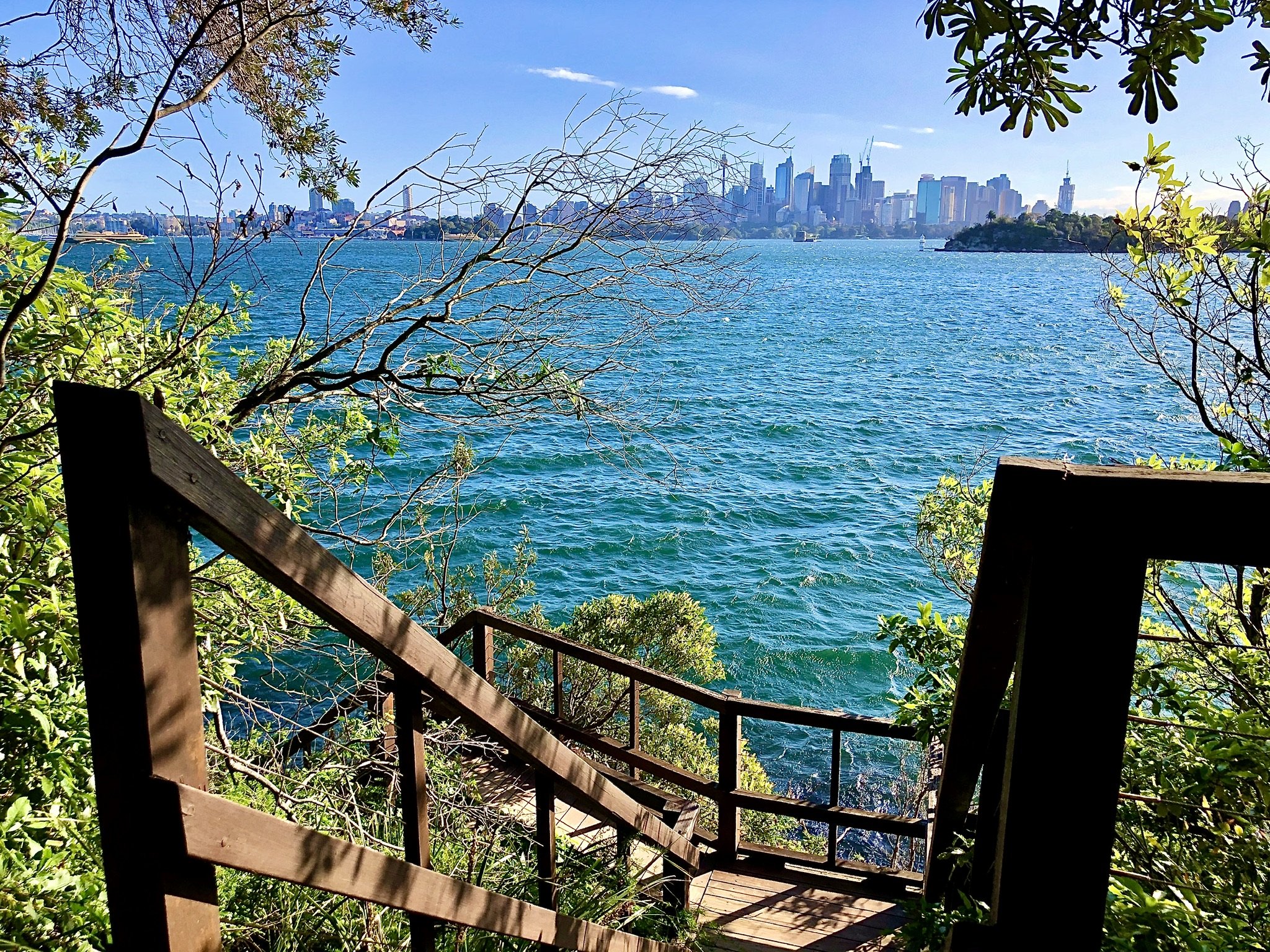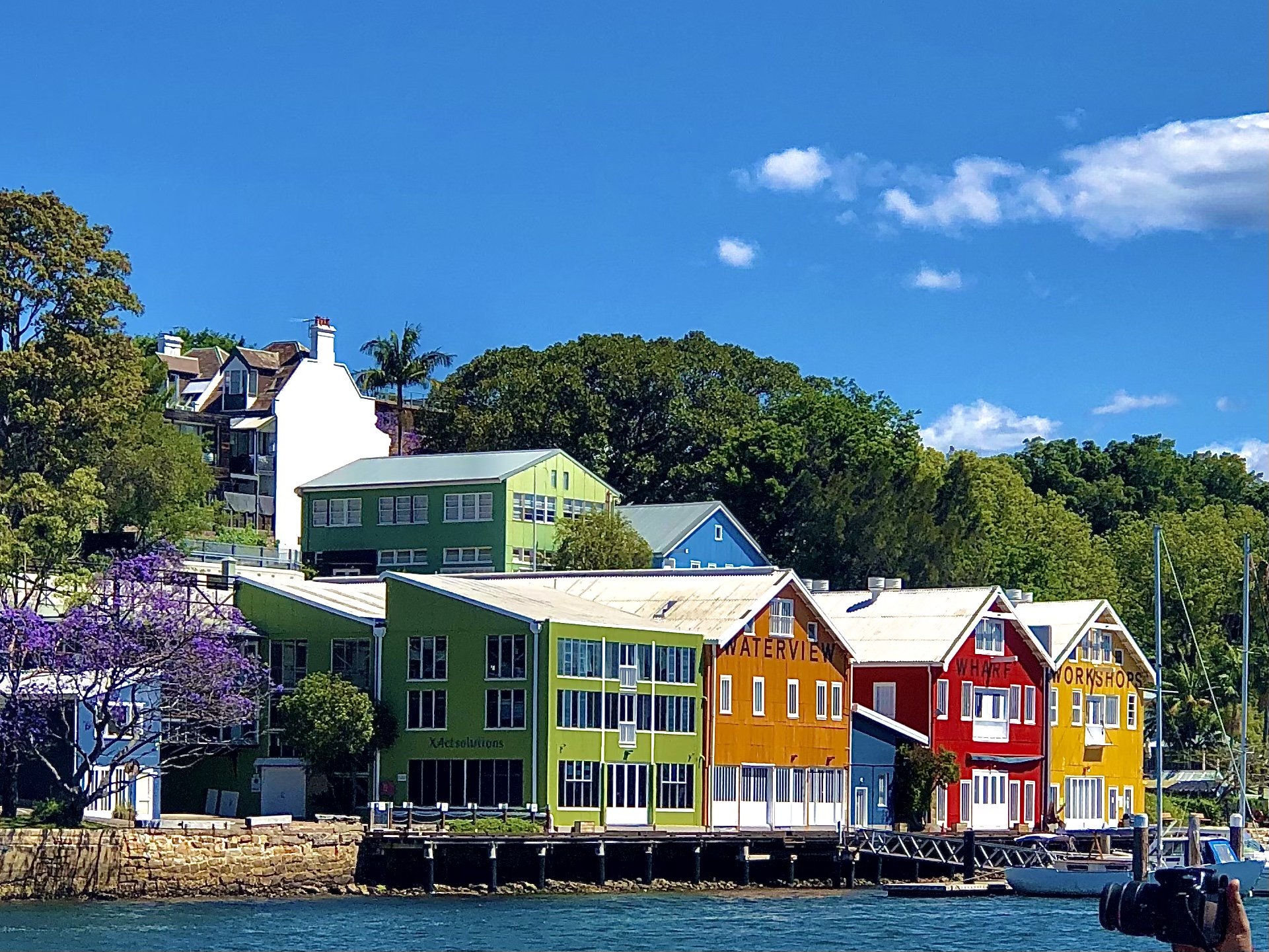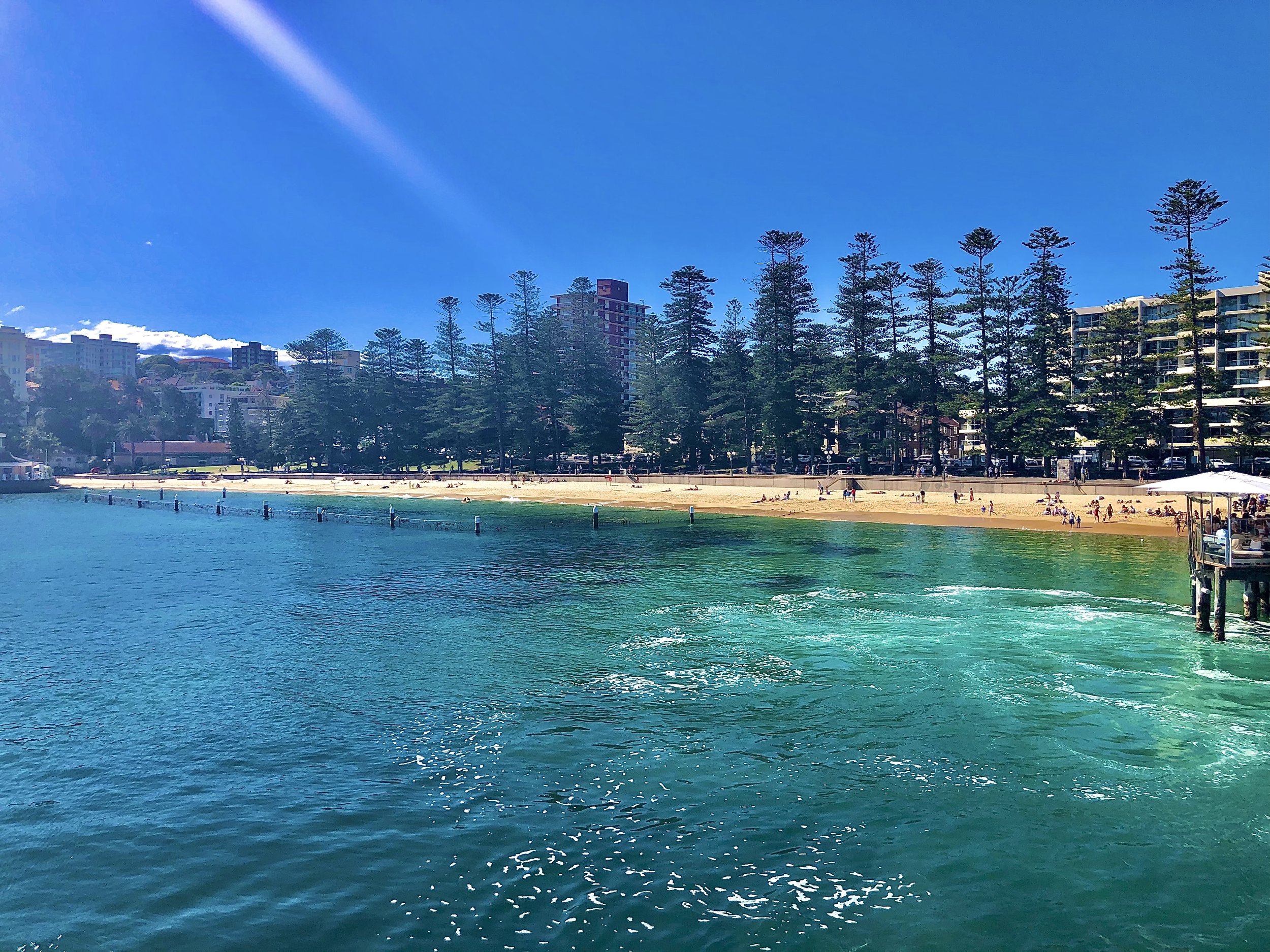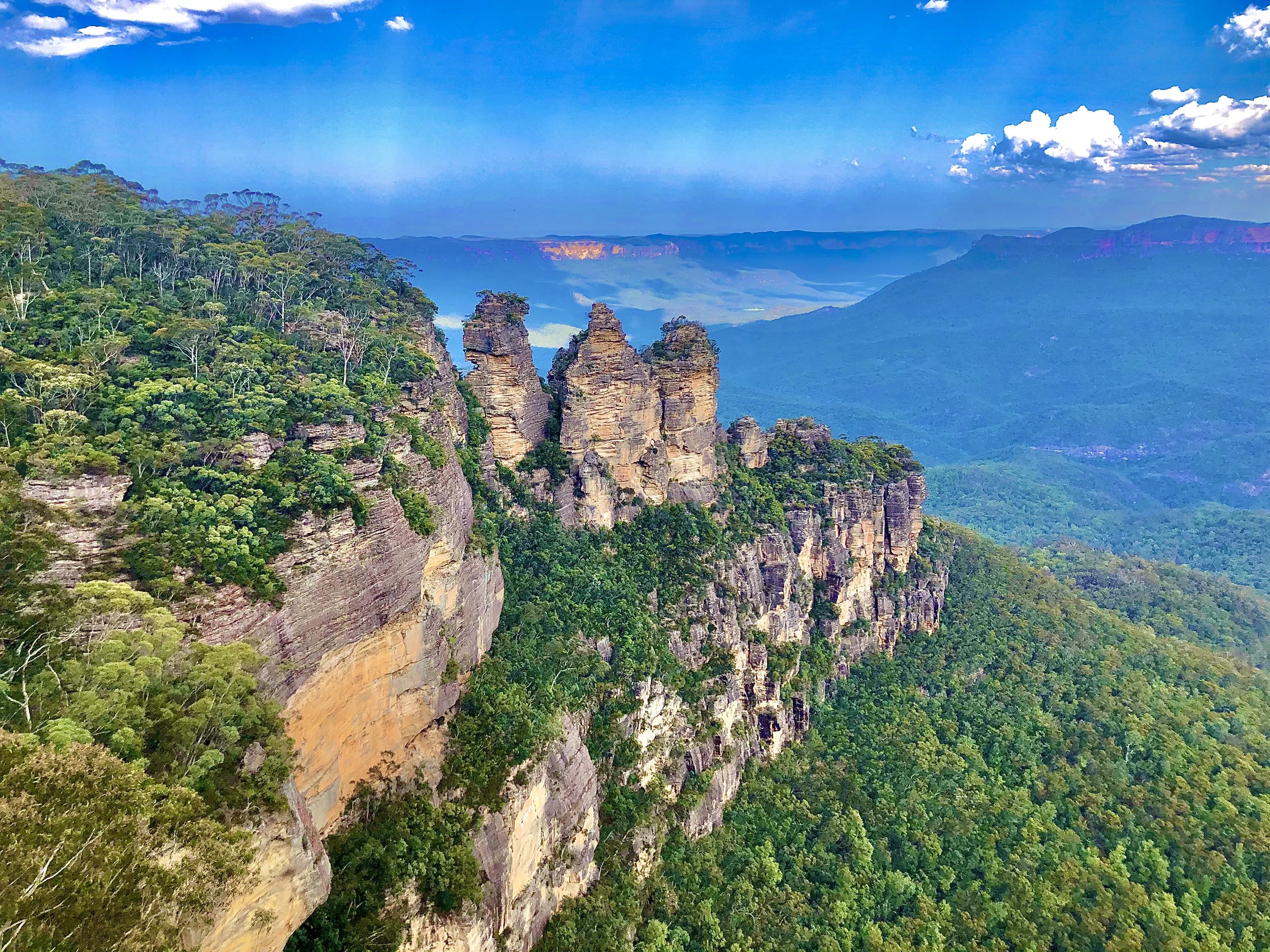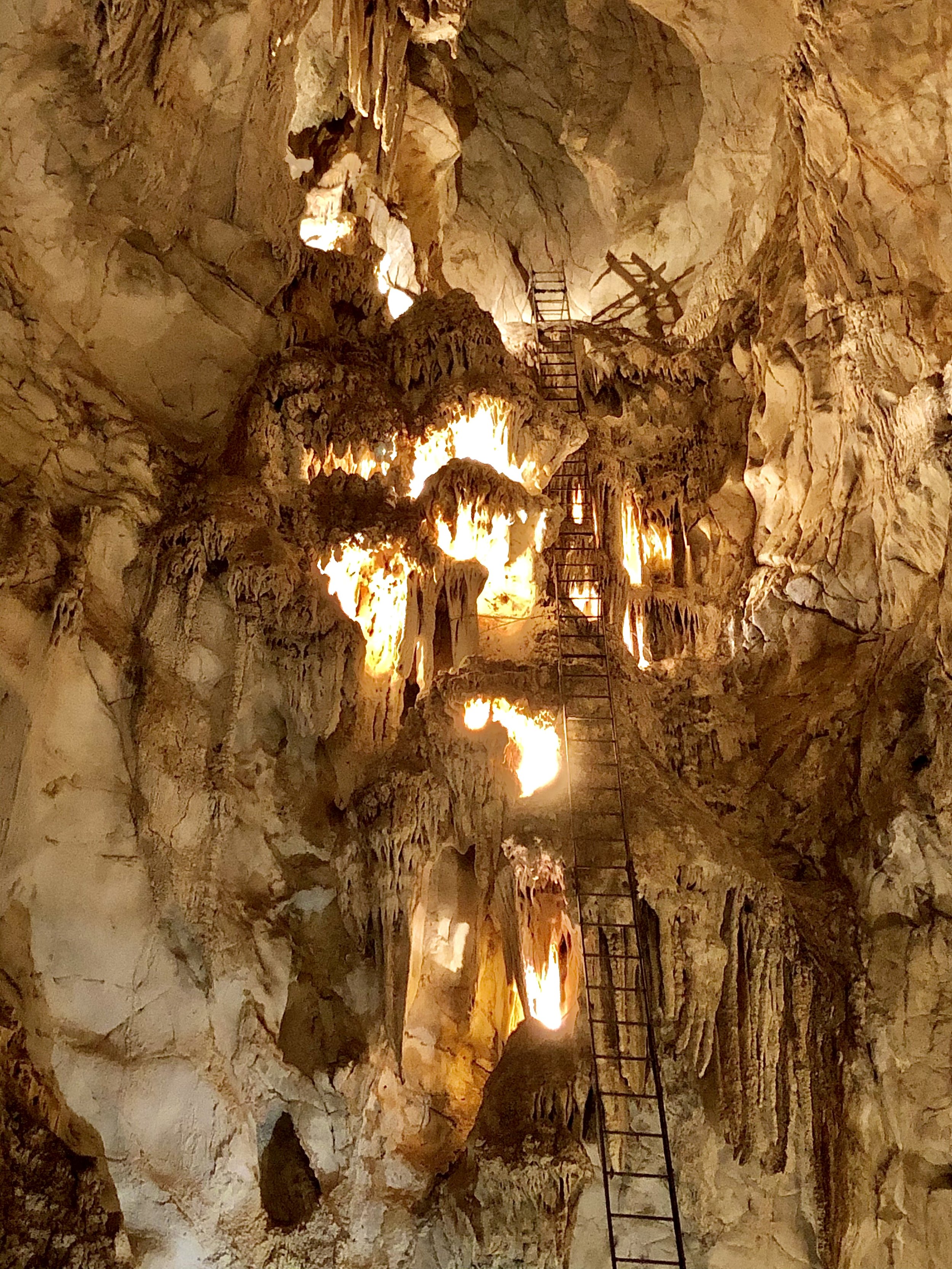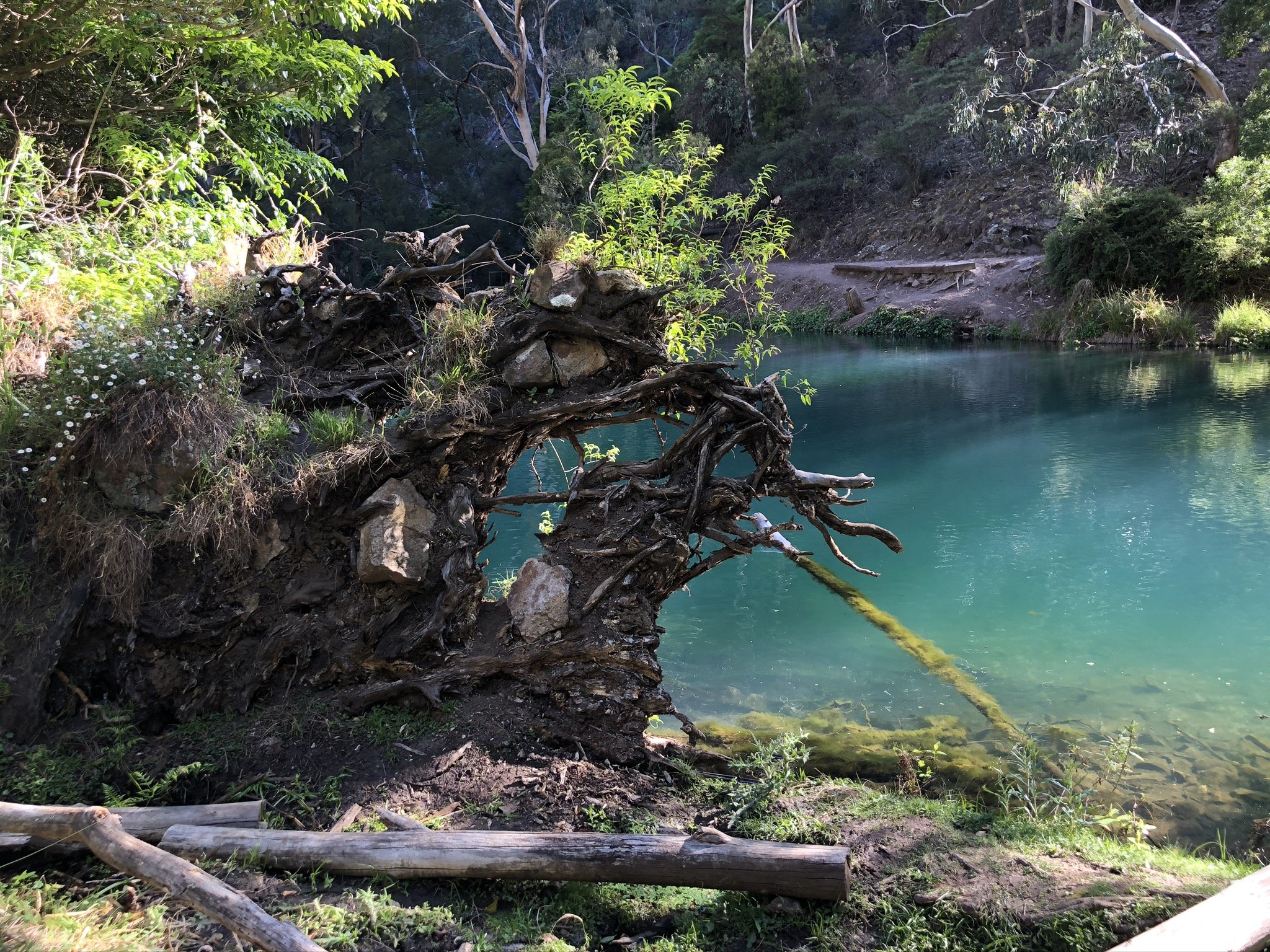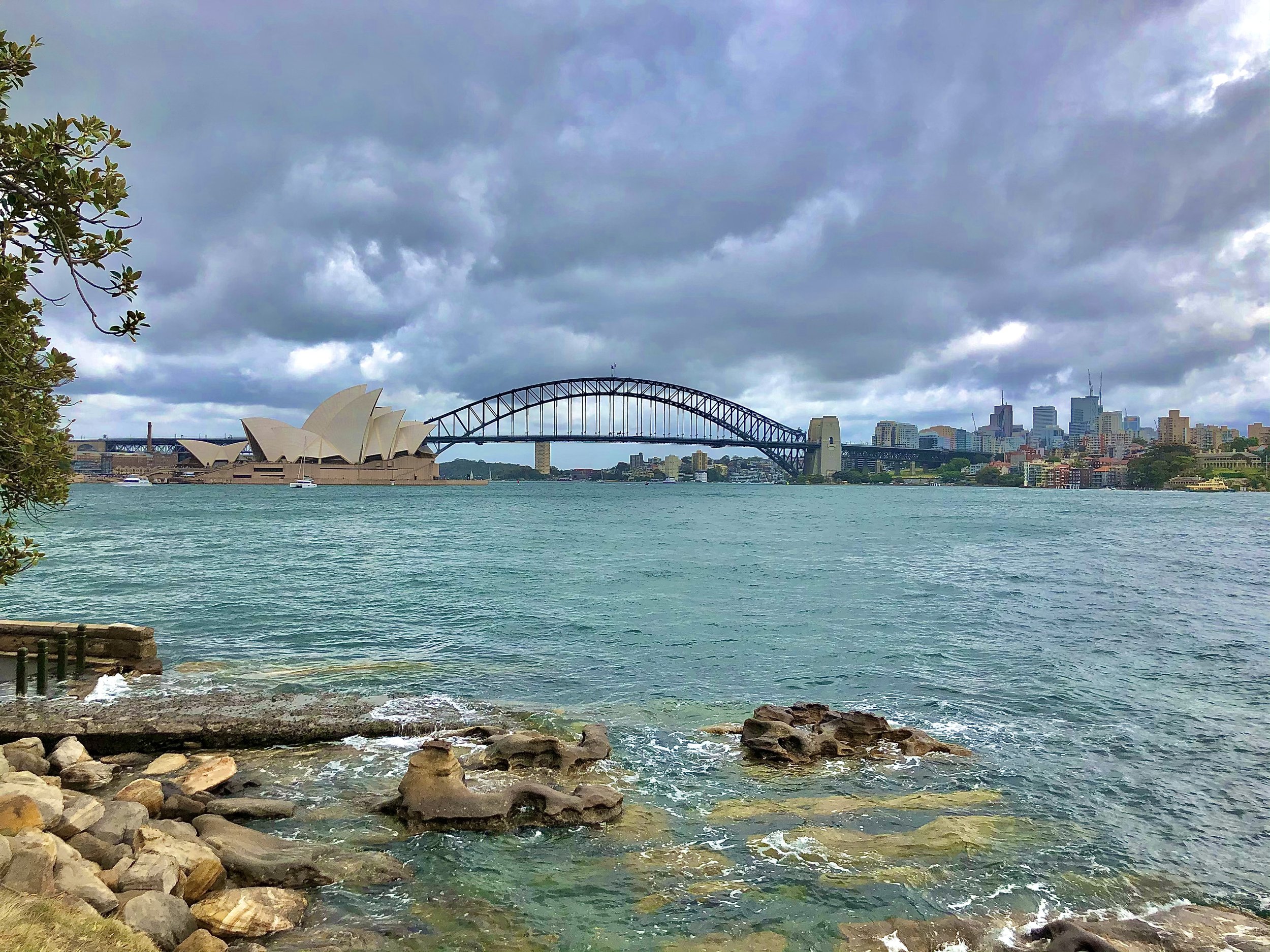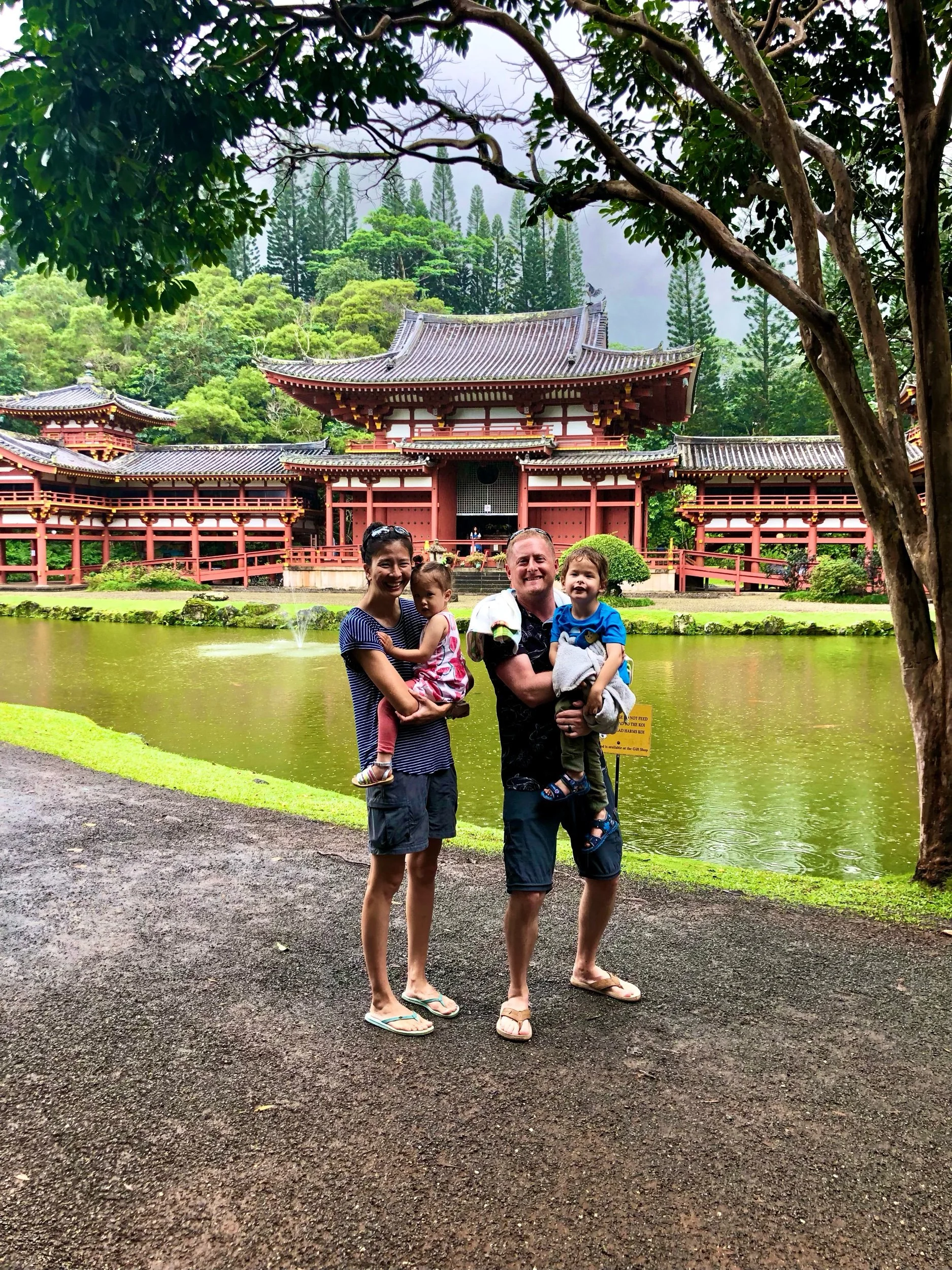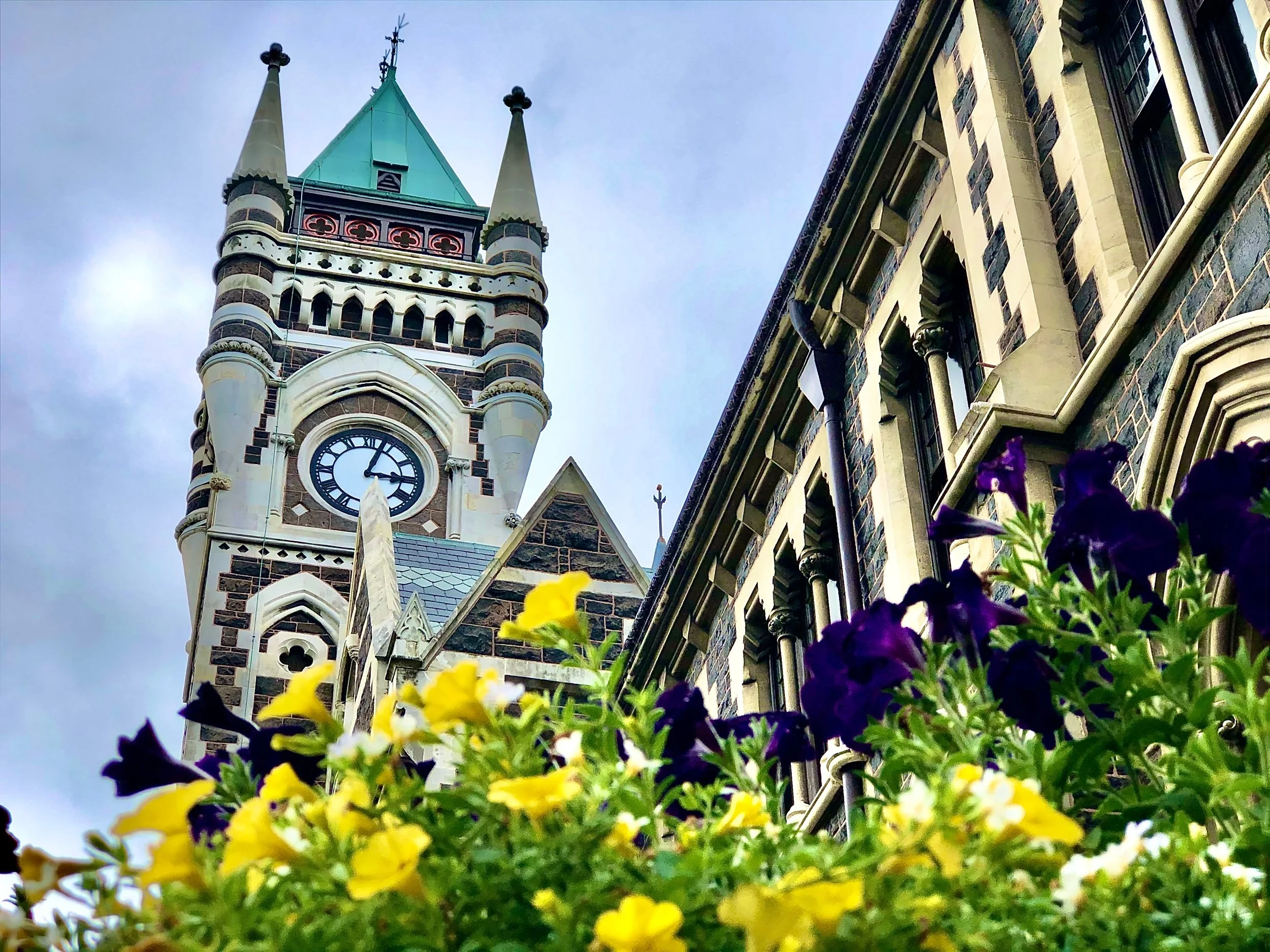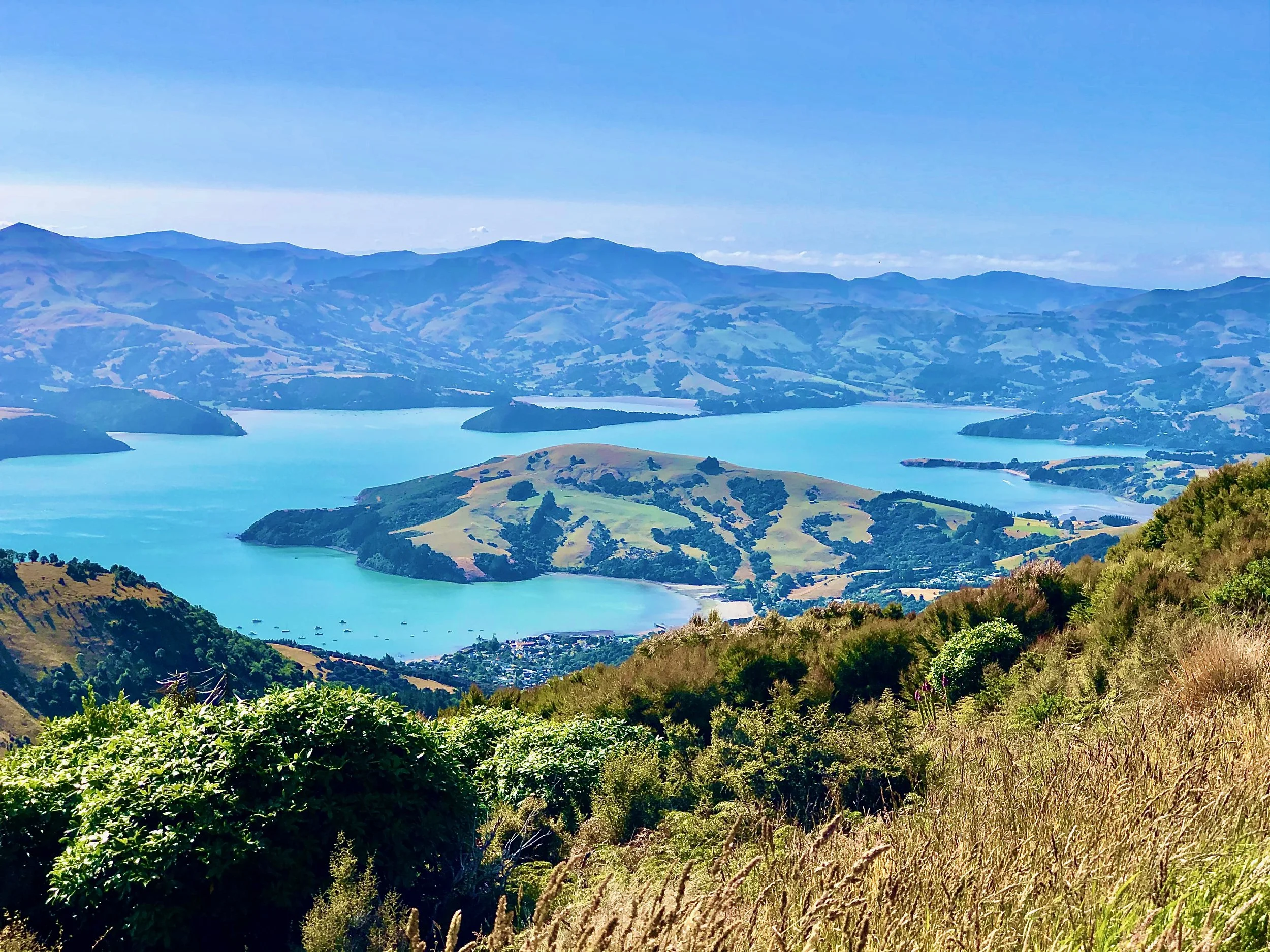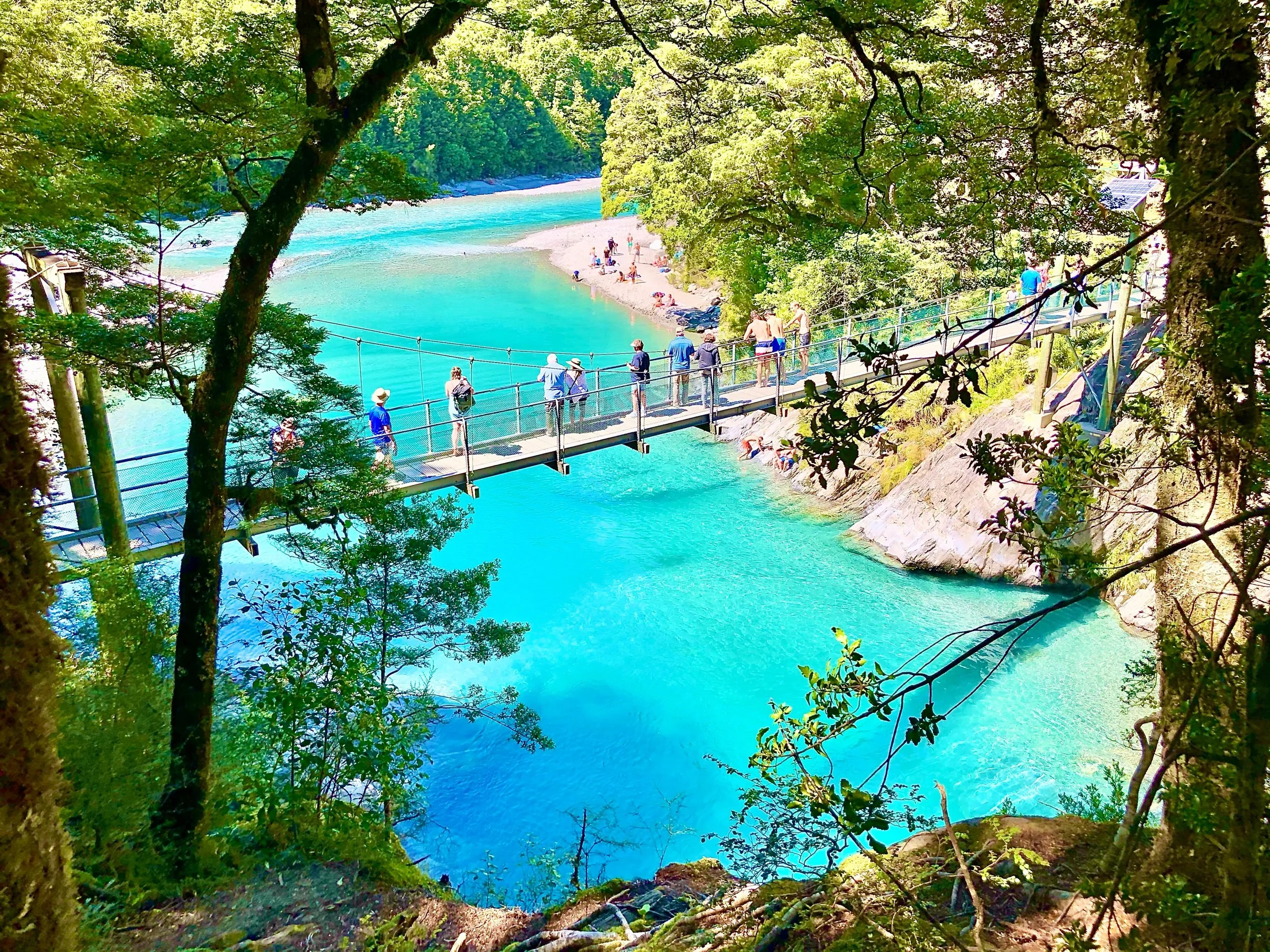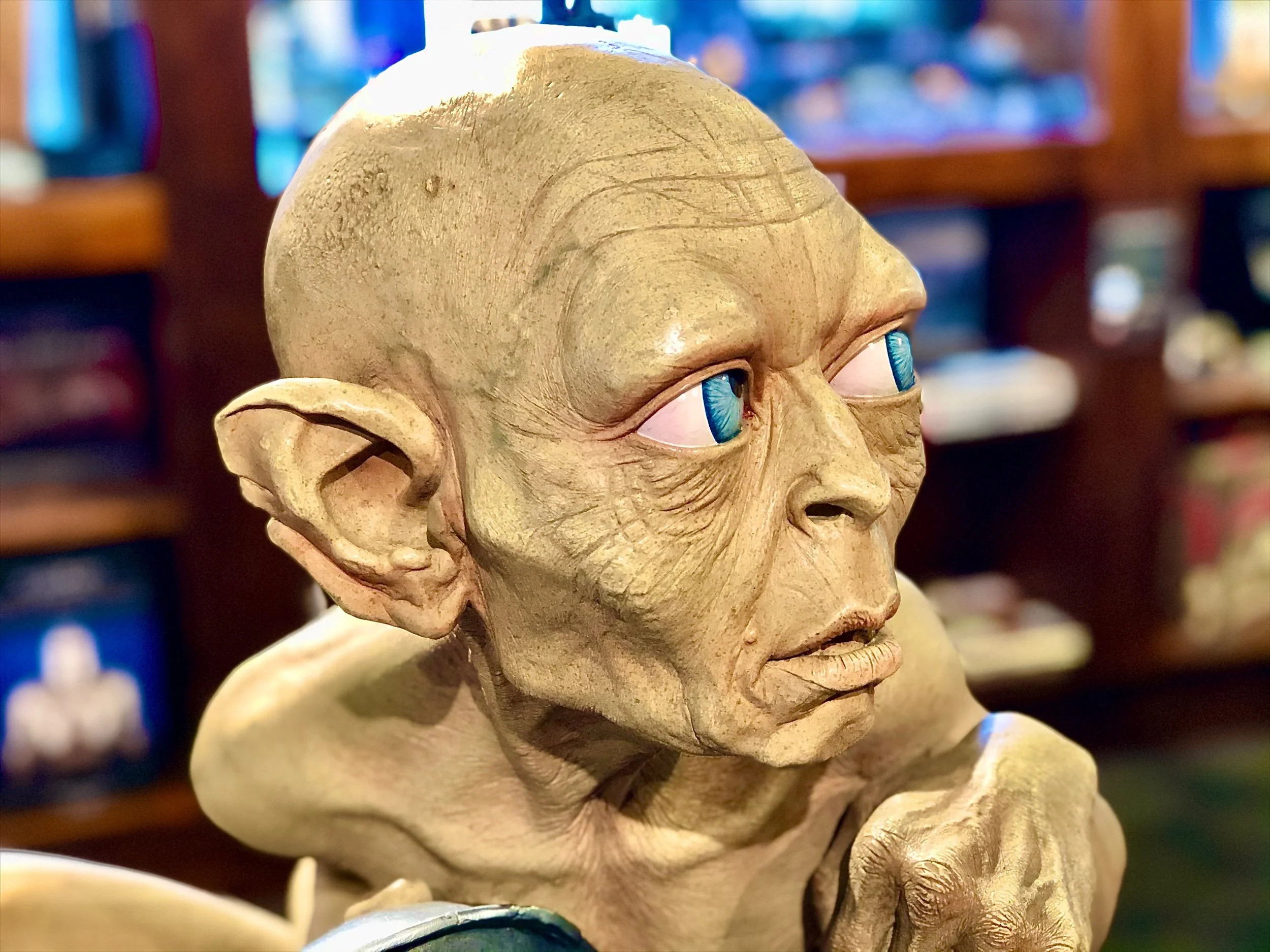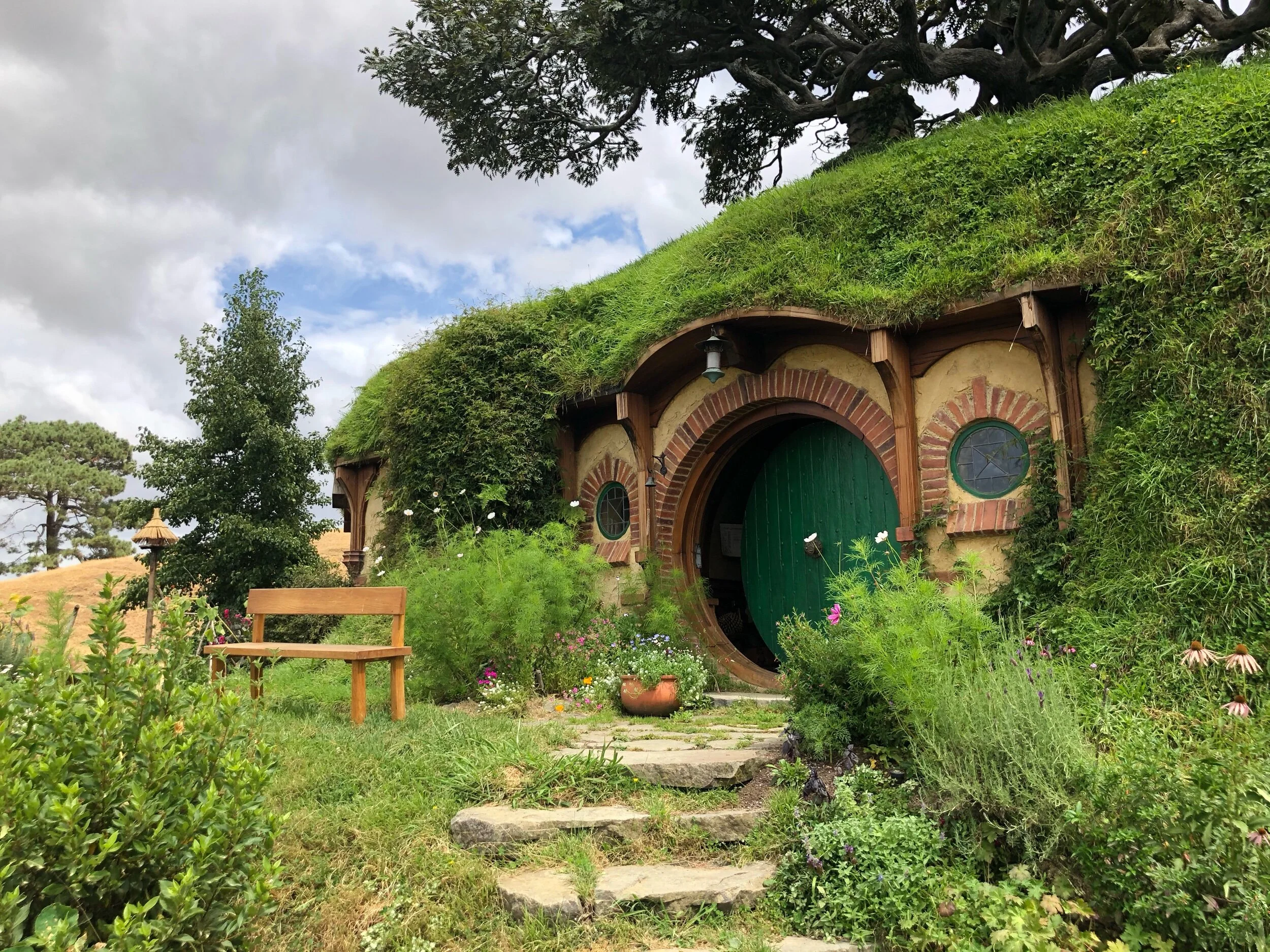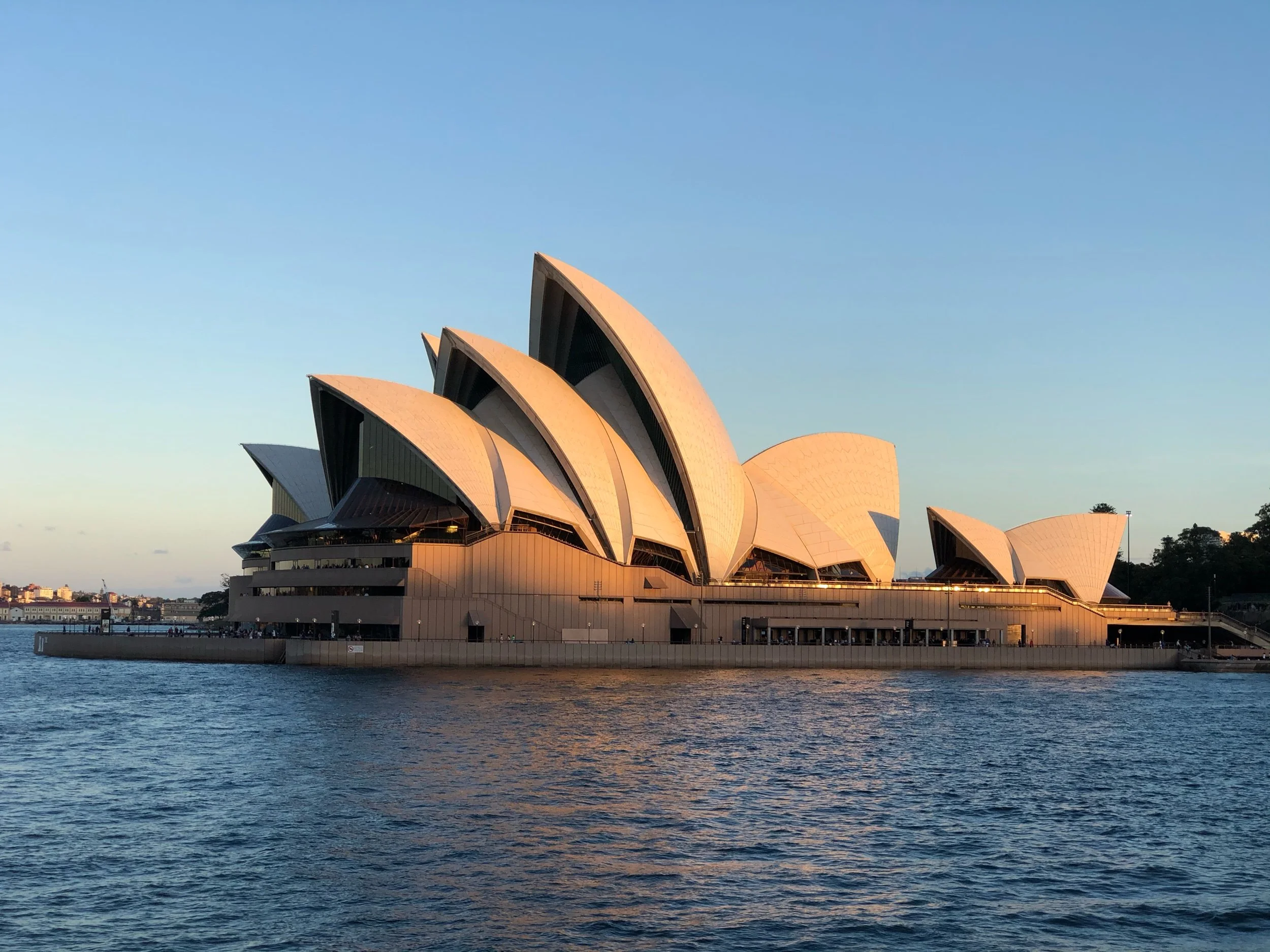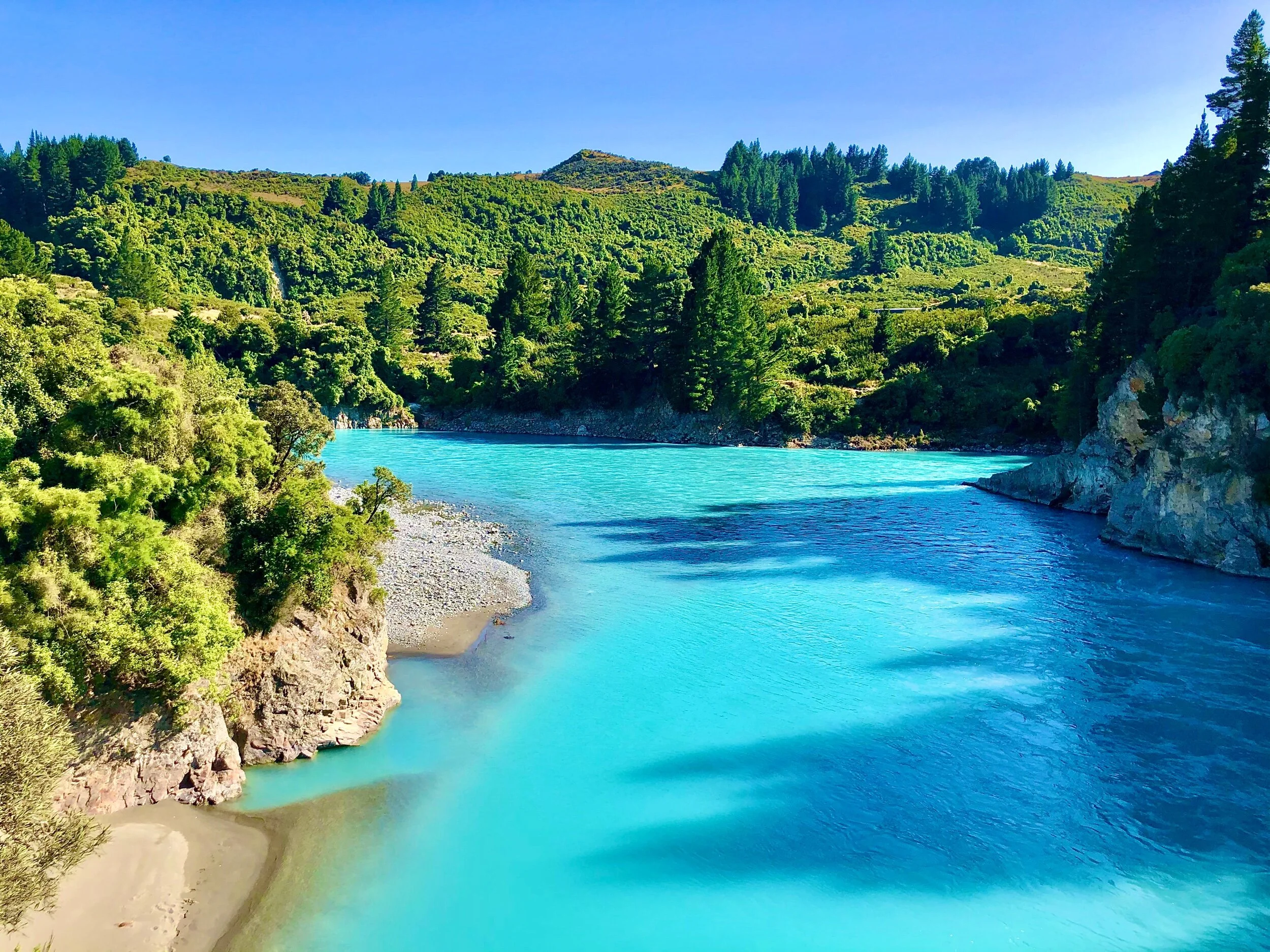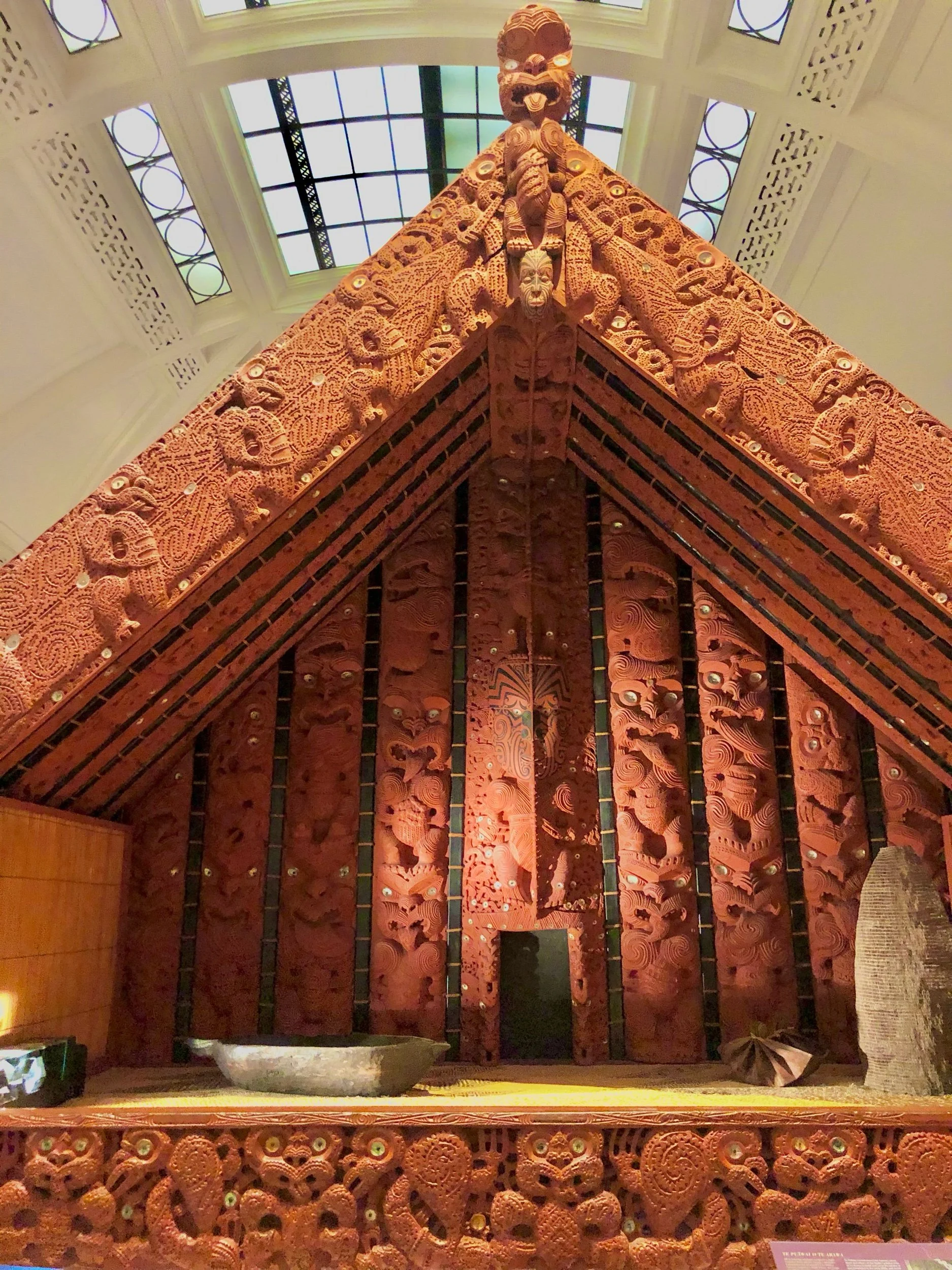Best Accomodation Blue Mountains NSW: Best Hotels and Sydney Highlights - Australia
Please note: This post may contain affiliate links. See our disclosure to learn more.
Destinations > Oceania > Australia > Best Accomodation Blue Mountains NSW: Best Hotels and Sydney Highlights - Australia
Sydney, the most populous city in Oceania, has been famous for its coastal beauty since British Admiral Arthur Phillip first arrived and described it as being "without exception the finest harbour in the world.”
Starting out as a British penal colony in 1788, which replaced the American penal colonies due to their declared independence in 1776, this dynamic “Harbour City” has transformed into a melting pot of rapid economic and social change that bloomed with rapid global immigration starting in the 1970’s.
Sydney is now most famous for its yacht-filled harbor, breathtaking beaches and the iconic Sydney Opera House. It also holds “Sydney Festival” every January, which is the biggest performing arts festival in Australia, as well as the “Vivid Sydney” festival of light, music and ideas in May-June, and the “International Sydney Film Festival” in June.
The area of Sydney was inhabited for at least 30,000 years - and possibly over 50,000 years - by Indigenous Australians, and was still inhabited by an estimated 4,000 to 8,000 from as many as 29 different clans upon the arrival of the Admiral and Lieutenant James Cook at Port Jackson - modern day Sydney - in 1788.
Although only 4,312 convicts were relocated to Sydney over the first 4 years, about half of the indigenous population died during the smallpox epidemic of 1789. The most recent census (2016) shows that less than 1.5 percent of Sydney’s population is still indigenous.
If you’re planning to visit Sydney, check out our list of highlights around Sydney to make the most of your trip - and our list of the best accomodation in Blue Mountains NSW.
Learn more about the Ultimate Australia & New Zealand Adventure at the bottom of this article!
Culture Smart! Australia
A guide to Australian culture and society intended to help turn your visit--whether for business or for pleasure--into a memorable and enriching experience.
Best Accomodation Blue Mountains NSW
The Blue Mountains are a stunning natural attraction that offer scenic views, hiking trails, waterfalls, and wildlife. If you are planning to visit this World Heritage-listed area, you will need a comfortable and convenient place to stay. Here are some of the best accommodations near the Blue Mountains that you can choose from.
One option is the Chalets at Blackheath, a luxury resort that features spacious and elegant chalets with fireplaces, spa baths, and balconies. You can enjoy the tranquil surroundings of the bushland, or explore the nearby attractions such as the Govetts Leap lookout and the Grand Canyon track. The resort also offers a gourmet breakfast hamper, free Wi-Fi, and a DVD library.
Another option is the Crowne Plaza Hawkesbury Valley, an IHG hotel that offers a range of facilities and services to suit your needs. You can relax in the indoor heated pool, the sauna, the spa, or the fitness center, or indulge in the fine dining at the Harvest Restaurant. The hotel also has a golf course, a tennis court, a playground, and a kids club. The rooms are modern and comfortable, with air conditioning, flat-screen TVs, and minibars.
A third option is the Lilianfels Blue Mountains Resort & Spa, a 5-star hotel that is located near the iconic Three Sisters rock formation. You can enjoy the panoramic views of the Jamison Valley, or visit the nearby Scenic World Blue Mountains for some adventure. The hotel has a heated outdoor pool, a spa, a gym, and a library. The rooms are elegant and cozy, with antique furniture, marble bathrooms, and plush bedding.
A fourth option is the Leura Gardens Accommodation, a charming hotel that is set in a beautiful garden with over 600 varieties of plants. You can admire the colorful flowers, or take a stroll to the Leura village for some shopping and dining. The hotel has a seasonal outdoor pool, a barbecue area, and a games room. The rooms are bright and airy, with garden views, free Wi-Fi, and tea and coffee making facilities.
If you're planning to stay near Sydney’s CBD, check out Blu Bar on 36 at the top of the Shangri-La in Sydney Harbour for the most breathtaking views of the Central Business District and surrounding areas.
While we highly recommend that you spend a few nights at the Shangri-La, here is a list of the other top hotels in Sydney. Just about all of them are famous for their ability to pamper you in ways that’ll have you forgetting about everything apart from your amazing Australian adventure - Enjoy!
Additionally, we really enjoyed eating at The Grand Siam in Bella Vista, on the outskirts of Sydney. It is an extraordinarily delicious - and affordable - very authentic Thai restaurant that we couldn’t seem to get enough of! If you're looking for Thai food, it's definitely worth the trip. Honestly, if you think you've found the best Thai spot near Sydney - for your money - but you haven't been here... you're missing out!
Sydney Harbour & Sydney Harbour National Park
With more than 150 miles of shoreline, Sydney Harbor - also known as Port Jackson - is the main attraction in Australia's largest city.
On one side of Sydney’s main harbor is Circular Quay, the main hub for ferries and water taxis that connect the city to the suburbs, amazing coastal hiking areas, and the harbor islands. With a short ferry ride you can reach Cockatoo Island, Fort Denison, Shark Island, Clark Island, Rodd Island, and Goat Island. It is also the main hub for buses, trains, taxis, and especially the incredible harbor cruises.
The other side of Sydney’s main harbor is home to the famous Sydney Opera House and the Royal Botanic Gardens, with clear views of Sydney Harbour Bridge. More than one million people gather around the foreshores in this area to watch the spectacular New Year's Eve fireworks display from the Sydney Harbour Bridge.
Sydney Harbour National Park
With many natural areas of the harbor protected by Sydney Harbour National Park, you will find pockets of natural bush and Aboriginal sites, beautiful parks and gardens - such as the starting location for the Sydney to Hobart Yacht Race at Nielsen Park, unspoiled harbor beaches - some of the most beautiful and gentle beaches in the city, and the many breathtaking hikes along the shorelines - a few of our favorites are listed later in this article!
“The national park is renowned for its sheltered beaches, tranquil picnic spots, rich Aboriginal, colonial and military heritage, aquatic reserves and harbour islands.” - Wikipedia
Fun Fact: Sydney Harbour was featured in Finding Nemo. It is where Marlin and Dory go to search for Nemo!
Sydney Opera House
The famous Sydney Opera House is a performing art center found at Sydney Harbor. It is one of the most distinctive buildings of the 20th century. The Opera House was designed by Danish architect Jørn Utzon and first opened in 1973 by Queen Elizabeth II.
To get the best photos of the Sydney Opera House, make sure to stick around at 7 pm to witness the Sydney Opera House light show called Badu Gili - which means water light in the Gadigal language. The Opera House will light up for 7 minutes to showcase a projection of Indigenous Australian Art on the building’s sails.
You can also book the Sydney Opera House Backstage Tour and explore behind the scenes of the performing arts. Included in these tours is a visit to the interior of the building to experience what it's like in the orchestra pit and dressing rooms while listening to insider stories!
Extra: Catch Vivid Sydney, a festival of light in May-June where you’ll get to see the Opera House and other buildings around it shine bright in colorful lights.
Sydney Harbour Bridge, Pylon Lookout, and BridgeClimb
The Sydney Harbour Bridge is an iconic landmark built across the Sydney Harbour. The bridge was built in 1923 and is nicknamed The Coathanger due to its arch design. At each end of the bridge, you can find a pair of concrete pylons that stand at 89 meters tall.
One of the best ways to get a fantastic view of the city skyline is by climbing the 200 steps up to the top of Pylon Lookout Sydney - so make sure you have full energy! On your way up, you can find three levels of exhibits that tell you the history of the bridge. Once you reach the top, you’ll be greatly rewarded with a spectacular view of the steel bridge itself, the beautiful harbor, and the Opera House surrounded by blue seawater.
You can literally hike up the curved part of the bridge all the way to the highest point for some serious thrills on the BridgeClimb for even more amazing panoramic views. The BridgeClimb experience is a guided walk high up along the bridge's arches, 440 feet above sea level!
Royal Botanic Garden Sydney
The 74-acre Royal Botanical Garden is a recreational area located in the heart of Sydney’s Central Business District (CBD). First opened in 1816, the garden acts as one of the most important botanical institutions in the world. Additionally, it offers a clear view of the Sydney Opera House and the Sydney Harbour Bridge for amazing photos.
What’s best about this garden is that there is no entrance fee! Feel free to go for a leisurely walk around the area and enjoy the views and the amazing trees, plants, and flower displays. If you don’t feel like walking, hop on the Choo Choo Express and explore the garden. A number of events and tours occur here annually as well. Learn more about the Ghostly Garden Tour, the Aboriginal Bush Tucker Tour, purchase some plants, or simply relax with some Nature Therapy by checking out the Royal Botanic Garden website.
You can also find Mrs. Macquarie’s Chair near the northeast tip of the Royal Botanic Garden. It is a sandstone rock in the shape of a bench hand carved by convicts in the 17th century for Elizabeth Macquarie, the wife of the Governor of New South Wales. About 3-minutes walk away from Mrs. Macquarie’s Chair is the Fleet Steps, an event venue that offers enchanting views of the Opera House, Harbor Bridge, and the city skyline as well as hosting outdoor screenings and being a great location to watch fireworks on New Years Eve.
Darling Harbour
Originally known as Long Cove, Darling Harbour is located next to Sydney’s City Centre. The area was renamed by Governor Ralph Darling in the 17th century. Darling Harbour is also home to the Sydney Convention & Exhibition Centre, the venue for the 2000 Summer Olympic Games.
Darling Harbour has an exciting nightlife - with its wide variety of funky nightclubs and bistros - as well as a few attractions for animal lovers during the day - Sea Life Sydney Aquarium and Wildlife Sydney Zoo. You can also find the world’s largest cinema screen, Madame Tussauds, Cockle Bay, King Street Wharf, and many other attractions to visit here.
From the end of May through mid-June many of Sydney's historic landmarks become a canvas for brilliant light installations and projections during the Vivid Sydney festival of light, music and ideas. This spectacle stretches all the way from Circular Quay to Darling Harbour. So, the pedestrian-only Pyrmont Bridge in here is an excellent place to see the many of the lights!
Darling Harbour isn’t just a beautiful pedestrian-only bridge walk, it’s also filled with plenty of delicious places to eat and fun things to do as well. Honestly, you could spend all day just relaxing and enjoying the sights, or doing a few activities, in this part of Sydney. Plus, it’s only a few blocks away from the Sydney Fish Market.
Sydney Fish Market
Located in Blackwattle Bay, about 2 kilometers away from Sydney’s CBD is the famous Sydney Fish Market. At this vibrant fish market, seafood lovers can enjoy fresh Aussie favorites such as oysters, rock lobsters, and even sea urchins!
There are over 100 species of seafood available every day that can be enjoyed at the many cafes and restaurants here. You will find various seafood delicacies ranging from fish chips to sashimi - and even the popular sushi doughnuts! Dine-in at the restaurants, choose your fish from the tanks, have it cooked upon order, and even enjoy the amazing view from the harborside boardwalk while enjoying your meal.
Sydney Fish Market Opening Hours: Every day (except Christmas) from 7 am - 4 pm.
Photo taken October 24th, 2019
Wedding Cake Rock Walk - Royal National Park Coastal Walk
The Wedding Cake Rock - also known as the White Rock - is on the Royal National Park Coastal Walk. This sandstone rock formation is suspended about 82 feet above sea level.
The trail - “The Coast track” - starts at the end of Beachcomber Avenue and goes past the Balconies, Waterrun, Wedding Cake Rock, and ends at Marley Head. It is a very scenic portion of the Coastal Track, but it does have a number of stairs to climb.
Despite its scenic location, the rock has been confirmed to be unstable and fragile - studies suggest that it will likely collapse into the Tasman Sea within a few years. To avoid accidents, fences have been placed around the Wedding Cake Rock area and no one is allowed to enter. However, you can still explore its beauty by walking along the fence-line without risking your safety.
Wedding Cake Rock still exists, but you have to walk to the far end of the fence and stick your camera high in the air to see it like this. Most of the area is fenced off because it’s unstable and cracked (notice the large crack on the top!).
Wedding Cake Rock is a great highlight along the Royal National Park Coastal Walk. Do keep in mind that some parts of the trail are natural and rocky. The spectacular views of the blue sea along the coast are also incredibly rewarding!
We also really enjoyed the Jibbon Loop Track around the tip of Jibbon Beach up to a really scenic lookout near Shelley Beach as well. Note that the Jibbon Loop Track is different from the Jibbon Track that connects with it.
We also took the awful brush and sand Jibbon Track from Shelley Beach toward Wedding Cake Rock thinking that it would be a good scenic shortcut. It turned out to be an unshaded desert instead - and it was miserable. The Jibbon Track is a very long trail with not much to see apart from brush - plus, it’s quite dry, hot, very sandy, and full of flies.
Once we caught up to “The Coast track” it got much more enjoyable as it was once again shaded. As soon as it reached “The Balconies” the beauty of the coast came back for the rest of the trail. Honestly, just skip the “Jibbon Track” but don’t forget to explore the “Jibbon Loop Track” as well.
Coogee to Bondi Beach Walk
The beach walk from Coogee to Bondi is one of the finest coastal trails that you can find in Sydney. Along the way, you’ll see a few of the most beautiful beaches in the Sydney area as well as the high sandstone cliffs. This 6 kilometer walk might take you about two to three hours depending on how many times you stop for a swim or a drink at the cafes along the way.
Typically, the walk begins at Bondi and ends at Coogee, but we recommend starting at Coogee to get the ‘grand reveal’ of the stunning Bondi Beach at the end. This beach walk will bring you up high onto the cliffside and back down at the sea level while offering you a spectacular view of your surroundings.
Some of our favorite spots along the walk were Gordons Bay and the Bronte Baths at Bronte Beach. Gordon’s Bay seemed to be a fairly popular place for locals to lay out in the sand - or along the rocks on either side - for a little relaxation. There were a good number of people out there when we strolled by - plus, it looks quite welcoming!
We were also lucky enough to be taking the walk during the annual “Sculpture by the Sea” event, at the end of October, which had some seriously artistic creations set up along the trail which we enjoyed!
Once you’ve reached Bondi, don’t miss a chance to take a dip in the famous outdoor swimming pool, Bondi Icebergs! You should also keep an eye out as you might be lucky enough to spot some whales. To ease your journey, check out this Bondi to Coogee walk map here.
Little Sirius Cove to Clifton Garden Walk
Little Sirius Cove is a tranquil hideaway located in Mosman. This whole area is surrounded by lush green trees, boatsheds, and a small beach. Little Sirius Cove is also suitable for those traveling with families as it has space for you to have a barbecue gathering, as well as playgrounds for the kids!
The public path from Little Sirius Cove to Clifton Gardens brings you around the outskirts of Taronga Zoo Sydney. It is a coastal pathway that is mostly natural, covered by trees in most places, with gorgeous views of Sydney Harbour - you can even see the Sydney Opera House in the distance!
You'll feel completely surrounded by nature along this trail and may even hear the sounds of the animals at the zoo as you pass by the Taronga Zoo Ferry Wharf at the entrance to the zoo, then walk around Bradley’s Head and through Sydney Harbour National Park. Stop at some of the more amazing scenic spots along the way, like Whiting Beach, Athol Bay Beach, and Taylors Bay before arriving at Clifton Gardens.
Clifton Gardens Reserve - a fairly scenic area to relax - also has a beautiful beach, dog park, and a jetty. This is another great place if you want to have a quiet picnic by the beach, listening to the sounds of waves and if you’re an angler, you can get on the jetty and unleash your fishing skills. Alternatively you could go snorkeling in the beach area as well - and if you're lucky, you might even spot seahorses!
Ferry: Parramatta to Circular Quay
An “Intro to Sydney” couldn't be easier than by riding the ferry from Parramatta to Circular Quay, or vice versa. Being able to see the highlights of Sydney Harbour, the beautiful riverside suburbs and islands, and the natural Australian landscapes, as well as its flora and fauna, all within about an hour is what makes a ferry ride or cruise up the Parramatta River so popular.
A Parramatta River Cruise is one of the best ways to experience everything the area has to offer.
The Parramatta River literally splits Sydney in half, between north and south, for 13.7 km (8.5 mi) with 9 main ferry wharfs on its way to Sydney Harbour.
The western-most wharf is in Parramatta, about half way to Blue Mountains National Park. On this end of the river you'll see plenty of pretty mangroves filled with Australian wildlife.
Passing through Sydney’s backwater, you'll stop at a number of charming waterside suburbs: Rydalmere, Sydney Olympic Park, Meadowbank, Kissing Point, Cabarita Park, Abbotsford, Chiswick, and Huntleys Point at Gladesville Reserve. Feel free to wander around them all and catch the next ferry to continue!
Next you'll swing by Balmain, Cockatoo Island, and Goat Island. Many people disembark at these locations to explore Australia’s incredible flora and fauna.
Coming into Sydney Harbour, you'll be welcomed by iconic archetecture such as the Harbour Bridge, Luna Park - Sydney's oldest amusement park, and the Sydney Opera House.
Lastly, you'll come upon Circular Quay on the eastern coast - the main ferry terminal in Sydney Harbour and in the heart of Sydney's Central Business District - where you can find shopping malls, many great restaurants and cafés, and the beautiful Royal Botanic Garden.
Parramatta ferry ticket prices are only $6 to $8 per person.
This unique ferry ride is like no other in Sydney or its surrounding regions.
Manly to Spit Bridge Walk
For more incredibly scenic views of Sydney take the Manly to Spit Walk.
This 10 kilometer trail has an elevation of 283 metres and it is considered moderate difficulty.
Along the way, you’ll come across beautiful beaches and dramatic cliffs overlooking the glittering sea waters.
The walk takes about 3 hours to complete - round trip - if you're moving at a brisk pace, but could take 2-3 hours each way if you're planning to stop for photos or to hang around at the beaches along the way.
There are several picnic spots too and you can even spice up your journey by renting a kayak!
Refer to the Manly to Spit walk map here to help you plan your trip.
Blue Mountains National Park
Blue Mountains National Park is located about two hours west from the city center of Sydney. You will find amazing rock formations, underground caves, and plenty of bushwalking trails here.
To get the best experience, you’ll want to set out on a trail and explore the forested valleys or camp out under the thousands of stars from the dark night skies. If you’re not familiar with the region, you can also take a guided tour and discover the Blue Mountains Aboriginal heritage.
Ride the Skyway Gondola across Jamison Valley to enjoy panoramic views of the forested cliffs and waterfalls. The botanic garden is a great place to check out some rare plants.
If you enjoy hiking, this is a great place to go with some breathtaking views. The relaxing sounds of nature, woodsy breeze, cliff edge trails, streams, and valleys are so amazing that poetry couldn’t accurately describe it. There’s also an excellent amount of waterfalls here to chase after!
Echo Point - The Three Sisters, Jamison Lookout & Wentworth Falls
Be sure not to leave the national park without taking a trip to Echo Point in the Blue Mountains. This lookout in Katoomba offers jaw-dropping views of the Jamison Valley surrounded by canyons and sandstone formations as well as the iconic Three Sisters. The Three Sisters are a set of unusual rock formations formed about 200 million years ago that tower 900 meters above the Jamison Valley.
The Three Sisters are the most famous landmark of the Blue Mountains National Park.
We also recommend continuing your journey to the nearby Wentworth Falls for a leisurely walk with great views to marvel at the waterfall that plunges about 100 meters to the valley floor. The walk is quite short but might take about one hour to casually enjoy.
It’s hard to explain how tall the waterfall is at Wentworth, but as you approach it you’ll hear what sounds like an “Iran” from the movie Avatar and the falls look like the floating mountains. Coincidence?
Jenolan Caves
Another one of Australia’s national treasures is the Jenolan Caves, a cave system dated to 340 million years ago. It has a total of 11 show caves and underground rivers such as the Temple of Baal, Orient, and Imperial caves.
You can fully explore these caves by booking a guided day tour or, if you want to have more fun, go on with the ghost tour where you’ll be told about the unexplained tales and legends of the caves.
The cave also holds monthly concerts where you'll be able to listen to the music with the amazing natural acoustics of the caves.
Jenolan Caves tickets vary according to the type of tour that you choose. For more information, you can visit this website.
Blue Lake Loop Walk, Carlotta Arch Walk with Devils Coach House & Nettle Cave
Just outside of the Jenolan Caves is a walking track - which is free - that brings you around a river area and through some fairly amazing caves as well!
The Jenolan Caves area has enough to fill a full day’s worth of activities. Take the Blue Lake walk nearby and admire the beauty of the crystal blue lake while catching glimpses of the lizards along the trail.
This short trail around the lake is easy and great for families with kids.
For nature lovers, don’t miss your chance to explore the Carlotta Arch walk - a tranquil stroll with mother nature. It is a short trail but does have a few steeper steps. This walk will reward you with spectacular views of the limestone formations as well as the Blue Lake at Jenolan Caves.
You can also find a path that winds up to a lookout where you can see the Devils Coach House cave - believe it or not, this cave is a popular venue for wedding ceremonies!
While you’re out here, check out the Nettle Cave. This cave is a bit drier than the other underground caves, but you will be able to see some rare stromatolites that are over 100,000 years old!
Must See Places in Sydney
There’s a good reason why Sydney is the main stop for those who are planning to visit Australia. You can experience the vibrant nightlife of the city or drive a few kilometers and reach the golden sands of Bondi Beach. Love theatres and performing arts? Book a tour to the Sydney Opera House or visit the many museums in the city. Nature lover? The Blue Mountains and the Sydney shorelines have a wide range of trails that you can go explore. The “Harbour City” has everything!
One last hot tip: Try the Ultimate Australia & New Zealand Adventure to see it all!
The Ultimate Australia & New Zealand Adventure
Loaded with the best experiences Australia and New Zealand have to offer, this is the adventure of a lifetime! (can be done separately). If you’re looking for the total Down Under experience, this is it.
Check out the “Ultimate Australia & New Zealand Adventure” for more information and booking.
Starting in Australia:
make your way to the beaches of Victoria in Melbourne
spend a day travelling along the Great Ocean Road
enjoy views of the 12 Apostles
walk through the rainforest in Great Otway National Park
explore the magnificent waterfalls and heritage at Grampians National Park
see the resident wild kangaroos and emus
adventure at the Mossman Gorge and Daintree Rainforest in Cairns
enjoy the Mala Walk at Uluru
snorkel at the Great Barrier Reef
stop by a Koala Hospital
explore the Jenolan Caves and the Jamison Valley at Blue Mountains National Park
stroll around the Royal Botanical Gardens in Sydney
visit the iconic Sydney Opera House and the Sydney Harbour Bridge
and relax seaside at Bondi Beach
In New Zealand:
opt to take the ferry to Waiheke Island near Auckland or take a day trip to see the glowworm caves and Hobbiton
explore the stunning Coromandel Peninsula and dig a natural jacuzzi in the sand on Hot Water Beach
visit Rotorua and opt to check out the geothermal area
enjoy a cultural overnight in a Maori village featuring a traditional hangi dinner and show
visit the Te Papa Museum
travel to the seaside town of Kaikoura to swim with dolphins or go whale watching
relax with a wine tasting at a local winery
travel across the Southern Alps
stay in the rainforest near the Franz Josef Glacier - opting to explore the glacier with a heli hike
go bungee jumping, jet boating, skydiving, paragliding, hiking or mountain biking in Queenstown
enjoy the stunning scenery of Fiordland National Park and Doubtful Sound on a day cruise - taking in the waterfalls and wildlife
visit Aoraki/Mt Cook National Park and spend the afternoon on the most amazing hike in New Zealand, taking in all of the magical alpine scenery
open your mind to the south pole at the International Antarctic Center in Christchurch
Learn more about New Zealand in our New Zealand articles, or book this incredible adventure today!
FAQ’s
How much does it cost to visit Sydney Harbour National Park and Blue Mountains National Park?
The cost of visiting Sydney Harbour National Park and Blue Mountains National Park depends on the mode of transportation, the type of accommodation, and the activities that you choose. Generally, the park entry fees are $8 per vehicle per day for the Glenbrook area of Blue Mountains National Park, and $7 per adult and $3.50 per child for the islands and forts of Sydney Harbour National Park². You can also buy an annual pass for unlimited access to these and other national parks in NSW². Additionally, you may need to pay for parking, camping, ferry, train, or bus fares, as well as guided tours, equipment rentals, or admission fees for some attractions. You can find more details on the official websites of the parks².
What are the best times to visit these parks and avoid the crowds?
The best times to visit these parks and avoid the crowds are during the weekdays, early mornings, or late afternoons, especially outside of the peak seasons of summer and school holidays. The weather is also a factor to consider, as some trails or attractions may be closed or inaccessible due to rain, snow, or fire danger. The climate in these parks is generally mild, with warm summers and cool winters, but it can vary depending on the elevation and location. You can check the current weather and alerts on the official websites of the parks² or use a reliable weather app before you go.
What are some other attractions or activities to do in these parks besides the ones mentioned in the article?
Some other attractions or activities to do in these parks besides the ones mentioned in the article are:
- In Sydney Harbour National Park, you can explore the historic sites of Fort Denison, Goat Island, and the Quarantine Station, enjoy the views from Bradleys Head, South Head, and North Head, swim or snorkel at Nielsen Park, Cobblers Beach, or Collins Flat Beach, picnic or kayak at Shark Island, Clark Island, or Rodd Island, or hike the Hermitage Foreshore track or the Fairfax walk².
- In Blue Mountains National Park, you can see the spectacular rock formations of the Three Sisters, the Ruined Castle, and the Pulpit Rock, admire the waterfalls of Wentworth Falls, Katoomba Falls, and Govetts Leap, discover the Aboriginal culture and art at Red Hands Cave and Grotto Point, visit the historic sites of Jenolan Caves and Hartley Historic Village, or enjoy the adventure sports of mountain biking, abseiling, or canyoning.
(1) Blue Mountains National Park | NSW National Parks. https://www.nationalparks.nsw.gov.au/visit-a-park/parks/blue-mountains-national-park.
(2) Sydney Harbour National Park | NSW National Parks. https://www.nationalparks.nsw.gov.au/visit-a-park/parks/sydney-harbour-national-park.
(4) Sydney Harbour National Park (Official GANP Park Page). https://national-parks.org/australia/sydney-harbour.
(5) Blue Mountains and Katoomba - west of Sydney, NSW. https://www.sydney.com.au/blue-mountains.htm.
Thank you VERY much for reading our article. We actually created this website to help people reach financial independence. Did you know that by having a remote job and traveling endlessly, or living in a country that has low costs of living, you can actually reach retirement quicker? Plus, retirement abroad is up to 75 percent cheaper as well! Learn more by exploring our website: EatWanderExplore and REmotiFIRE.
See our Thank You page to sign up for our free weekly newsletter - you’ll receive only 1 email per week letting you know about our latest travel articles, remote-work life, and amazingly affordable destinations!
Found this post useful? Buy us a coffee to help support this site’s running costs OR share this article with a friend.


